#lavandula sp.
Text
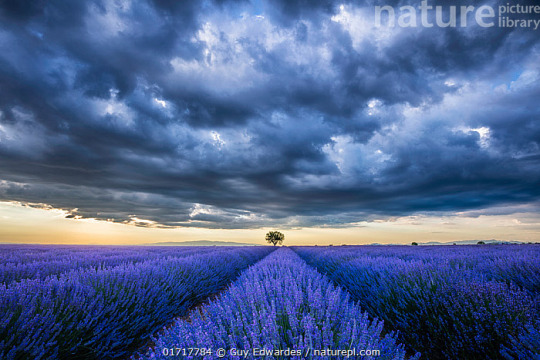
Lavender (Lavandula sp.) field under a stormy sky at sunset, Plateau de Valensole, Provence, France. July.
Photographer: Guy Edwardes
#guy edwardes#photographer#landscape#lavender field#lavandula sp.#field#stormy sky#sunset#plateau de valensole#provence#france#nature#flower photography
30 notes
·
View notes
Text
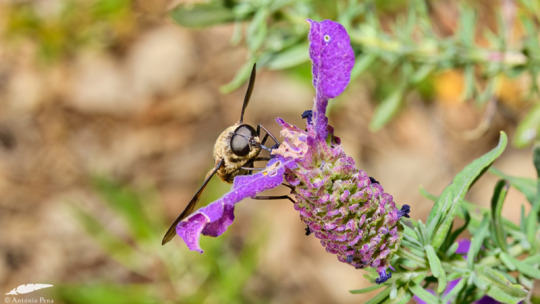
Pangonius sp on French Lavender - Pangonius sp em Rosmaninho (Lavandula stoechas)
Alcochete/Portugal (8/05/2024)
[Nikon D850; AF 105mm Micro-Nikkor F2,8 with Flash Nissin Di 700A; 1/250s; F22; 400 ISO]
9 notes
·
View notes
Text
15 Flores para Enriquecer a Dieta
Compilado por Tais Tonobohn, inspirado por BirdNerd Sophie.
Continuando o assunto do último post onde listamos 15 ervas seguras para incrementar a dieta da sua ave, vamos agora falar sobre elas, as belíssimas flores comestíveis.
Você sabia que espécies muito populares como o ringneck consomem consideráveis quantidades de flor? Quando pensamos em psitacídeos sempre associamos a alimentação a frutas ou sementes, mas a verdade é que eles são mestres em tirar proveito de tudo que pode ser coletado, não importa se é um inseto ou uma rosa.
Por esse motivo, a dieta deles na natureza é muito rica e diversificada, e pode parecer complicado tentar reproduzir isso em cativeiro. Não tema, as coisas são mais simples do que parecem; A seguir listamos 15 flores comestíveis que tornarão a brincadeira naturalmente mais colorida. E o melhor, algumas delas são fáceis de encontrar desidratadas em casas de produtos naturais.
ATENÇÃO! Você pode ofertá-las frescas, mas tome muito cuidado para higienizá-las adequadamente caso não conheça sua procedência. Se encontrar uma flor e não souber identificar sua espécie com exatidão, não arrisque ofertar. Algumas plantas seguras possuem primas próximas que são indigestas. Na dúvida, compre desidratadas para consumo humano.
1. Calêndula (Calendula officinalis)
Vitamina A; Adstringente; Antifúngica; Anti-inflamatória; Anticéptica; Antiespasmódica; Diaforética; Sedativa.

2. Camomila (Matricaria chamomilla)
Antiespasmódica; Carminativa; Calmante; Cicatrizante; Tônica; Emoliente; Refrescante; Antisséptica; Antialérgica.
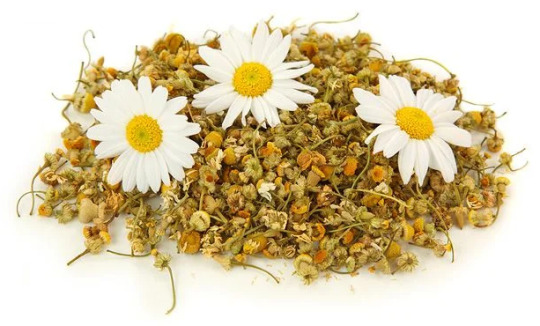
3. Cravo (Dianthus caryophyllus)
Vitaminas A e C; Calmante; Antialérgica; Anti-inflamatória; Antioxidante.

4. Crisântemo (Chrysanthemum sp.)
Antioxidante; Anti-inflamatória; Desintoxicante; Calmante.
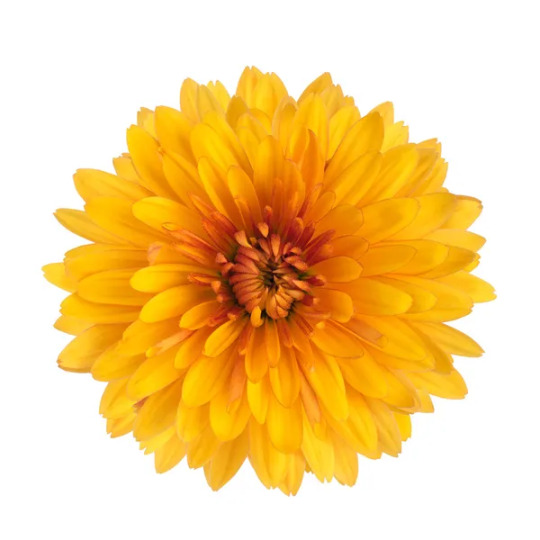
5. Dente de Leão (Taraxacum officinalis)
Vitaminas A, C e K; Antioxidante; Anti-inflamatória; Auxilia no combate a diabetes e colesterol alto.

6. Gardênia (Gardenia jasminoides)
Vitamina C; Antioxidante, Antibacteriana, Analgésico, Antifúngico, Antiespasmótico.

7. Girassol (Helianthus annuus)
Vitamina E e Ômega-6; Antioxidante; Cicatrizante; Anti-inflamatória; Fonte de proteínas e óleos essenciais.

8. Hibisco (Hibiscus sabdariffa)
Espécie comumente usada para fazer chás; Antioxidante; Anti-inflamatório; Melhora saúde cardiovascular; Auxilia no combate ao colesterol alto.

9. Lavanda (Lavandula sp.)
Calmante; Antisséptico; Antibacteriana; Cicatrizante; Alivia distúrbios respiratórios.

10. Magnólia (Magnolia grandiflora)
Ansiolítica; Antioxidante; Antialérgica; Anti-séptica; Anti-inflamatória; Digestiva.

11. Maracujá (Passiflora edulis)
Calmante; Sedativo; Antibacteriana; Auxilia no controle da pressão e colesterol alto.

12. Margarida (Leucanthemum vulgare)
Vitaminas A, C e E; Possui cálcio, fósforo e selênio; Anti-inflamatória; Adstringente; Antiespasmódica; Cicatrizante; Tônica; Emoliente.

13. Petúnia (Petunia sp.)
Antioxidante; Anti-inflamatória; Antisséptica.

14. Rosa (Rosa sp.)
Vitaminas A, C e E; Anticéptico; Antioxidante; Ácidos graxos essenciais; Anti-inflamatório e Antibacteriana.
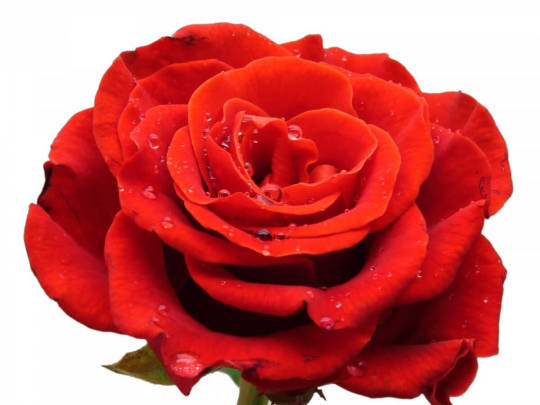
15. Violeta (Viola odorata)
Vitamina C; Antioxidante; Melhora circulação; Expectorante; Analgésico; Anti-inflamatório; Diurético; Antibacteriana.

1 note
·
View note
Text
Jengkol Unmul di IKN
Catatan Rizal Effendi

Menteri LHK bersama mahasiswa Unmul penerima penghargaan mahasiswa berprestasi.
SAYA suka jengkol tahi lala. Enak banget. Saya sering beli di Samarinda. Bu Eeng, chef yang sering mengirimi saya makanan ternyata juga pencinta jengkol. Dia pernah pesan jengkol kepada saya. Tapi saya hanya suka jengkol tahi lala. Jengkol balado, semur jengkol atau masakan jengkol lainnya saya tidak terlalu suka.
Tapi saya kaget Menteri Lingkungan Hidup dan Kehutanan (LHK) Prof Dr Ir Siti Nurbaya Bakar M.Si ketika menyampaikan orasi ilmiah di acara Dies Natalis ke-60 Universitas Mulawarman (Unmul) Samarinda, Selasa (27/9) kemarin, menyinggung soal jengkol. Istimewanya, dia berencana menanam jengkol di lokasi Ibu Kota Nusantara (IKN).
Bukan hoaks. Ini berita benar. Menteri bicara jengkol ketika menginformasikan berbagai jenis tanaman pada hamparan wilayah IKN sebagai bentuk menghadirkan kembali hutan alam tropika basah di sana. Orasi ilmiah Prof Siti Nurbaya berjudul “Membangun Hutan Tropika Basah Kalimantan: Modalitas Menuju Indonesia’s FOLU (Forestry and Other Land Use) Net Sink 2030.”
Indonesia’s FOLU Net Sink adalah aksi mitigasi dalam menurunkan emisi gas rumah kaca (GRK) dari sektor kehutanan Indonesia, tak hanya skala nasional, namun juga secara global sebagai “legacy” generasi sekarang kepada generasi mendatang.
Ada 4 jenis tanaman yang bakal ditanam di IKN, tutur Menteri. Salah satunya jenis tanaman untuk naungan dan sumber pakan satwa. Ini disebut tanaman Multi-Purpose Tree Species (MPTS). Menteri menyebut di antaranya jenis jengkol (Archidendron pauciflorum), rambai (Baccaurea motleyana), mangga (Mangifera indica), dan nyawai (Ficus variegate).
Jengkol adalah tumbuhan khas di wilayah Asia Tenggara. Manfaat lain dari jengkol dapat mencegah diabetes dan baik untuk kesehatan jantung. Karena kemampuannya menyerap air tanah yang tinggi, sehingga pohon jengkol juga bermanfaat dalam konservasi air.
Selain MPTS, IKN yang menerapkan konsep forest city, juga akan ditanami jenis tanaman endemik Kalimantan seperti belangeran (Shorea balangeran) dan kapur (Dryobalanops sp), tanaman cepat tumbuh (fast growing species) dan jenis tanaman anti-nyamuk untuk mencegah penyakit malaria dan demam berdarah secara alami seperti sereh wangi (Cymbopogon nardus) dan kemangi (Lavandula sp).
Sehubungan dengan itu, Kementerian LHK saat ini membangun pusat persemaian Mentawir seluas 120 hektare di lokasi IKN dengan produksi bibit 15 juta batang per tahun. Pada saatnya nanti, juga akan dilanjutkan dengan Pembangunan Pusat Plasma Nutfah Nusantara.
Menteri Siti minta Universitas Mulawarman dengan fakultas kehutanannya sebagai penggerak bersama-sama IPB dan UGM dalam pembangunan pusat genetic resources, yang ada di Indonesia sebagai modal dasar pembangunan Indonesia di IKN.
Di hadapan Gubernur Isran Noor dan catur sivitas akademika Unmul, Menteri LHK juga memuji Kaltim telah lebih dulu bekerja terkait dengan mitigasi iklim dan urusan karbon melalui kegiatan FCPF (Forest Carbon Partnership Facility) World Bank, yang telah sampai tahap akhir.
Bahkan dari hitung-hitungan dia, Kaltim sudah memiliki surplus pengurangan emisi, melampaui 5 juta ton CO2-e, yang dapat dibayarkan. Maka potensi nilai total RBP (Result Based Payment) dari Program FCPF, Kaltim bisa mendapatkan pembayaran sampai 110 juta dolar US. Itu kira-kira setara dengan Rp 1,5 triliun. Bayangkan!
“Kaltim dengan modalitas hutan yang luas dan konsep forest city IKN dapat menjadi teladan bagi dunia, bahwa pembangunan ekonomi di Indonesia dapat secara nyata dilakukan dengan tetap memerhatikan aspek ekologi dan sosial budaya masyarakat,” demikian kata Menteri.
“AKREDITASI UNGGUL”
Saya senang bisa hadir dalam acara dies natalis Unmul ini. Senang bisa hidup beberapa hari di lingkungan kampus Gunung Kelua yang rimbun. Bersama Gubernur Isran Noor, yang juga ketua umum Ikatan Alumni (IKA) Unmul, saya sempat mengikuti acara jalan sehat mengitari kampus mendampingi dekan saya, Prof. Syarifah Hudayah bersama Dr Fitriadi, Fathul Halim, dan Agus Wiwaha.
Sebelum acara puncak, Rektor Unmul Prof Dr Masjaya, M.Si sempat mewisuda 1.500 lulusan S1 dan S2 gelombang III. Ini wisuda terakhir yang dihadiri Masjaya karena bulan depan jabatan rektor akan diemban Dr Ir H Abdunnur, MSi. “Mohon doa dan dukungannya, Brother,” kata Abdunnur kepada saya.
Masjaya mengaku bangga mendapat kepercayaan memimpin Unmul selama 8 tahun. Apalagi jumlah mahasiswanya terbesar di Kalimantan. Sekitar 30 ribu lebih. Hebatnya, hampir semuanya akreditasi A. Bahkan fakultas kehutanannya, yang menopang pola ilmiah pokok Unmul sebagai pusat penelitian hutan tropika basah meraih predikat “Unggul.”
Fakultas Kehutanan (Fahutan) Unmul termasuk fakultas pertama yang didirikan tahun 1962. Kampusnya dulu di Sidomulyo. “Musuh besar” bersaing dengan anak-anak Fakultas Ekonomi di kampus Flores, di mana saya kuliah. Dekannya sekarang Prof Dr Rudianto Amita.
Saya pernah bilang Fahutan itu seperti fakultas penebang kayu. Di tahun 1970-an mahasiswanya membeludak. Maklum waktu itu Kaltim lagi boom kayu. Penebangan di mana-mana. Setelah kayu habis, mahasiswanya melorot. Syukurlah sekarang bangkit lagi. Fahutan jadi andalan kita, sebab yang menjaga, merawat dan menanam pohon itu, andalannya para rimbawan Fahutan
Untuk mendekati dan memberi kontribusi yang lebih besar bagi IKN, Unmul akan membangun kampus baru di kawasan hutan pendidikan Bukit Soeharto. “Terima kasih kepada Ibu Menteri LHK, yang telah memberikan dukungan terhadap rencana tersebut,” kata Masjaya.
Bukit Soeharto ditetapkan Presiden Soeharto sebagai taman hutan raya (Tahura) pada tahun 1982. Nama Soeharto dipakai karena dia pernah singgah di sana. Sekalian untuk memberikan semangat kepada warga untuk menjaganya. Maklum di situ ada ladang lada masyarakat dan bahkan sering dijarah penebang kayu dan penambang batu bara.
Luas Bukit Soeharto sekitar 61 ribu hektare. Belakangan sekitar 20 ribu hektare diserahkan ke Unmul menjadi hutan pendidikan dan pelatihan. Sekarang ke dalam kawasan pengembangan IKN. “Keputusan itu menjadikan Unmul tidak dapat dipisahkan dari IKN,” kata Masjaya, yang juga masuk dalam Tim Ahli Transisi IKN.
Gubernur Isran Noor memuji kemajuan yang diraih Unmul. “Hampir semua posisi jabatan di daerah ini termasuk kepala daerah, alumnus Unmul. Karena itu kepada adik-adik mahasiswa harus bangga belajar di kampus ini,” tambahnya.
Isran yang juga ketua umum IKA Unmul menjadi salah satu dari 60 penerima penghargaan. Dia dinilai sebagai alumnus yang berprestasi dan tokoh berjasa. Ketika dia mengambil S3-nya di Universitas Padjadjaran, dia menunjukkan kualitas lulusan Unmul. Isran “the best.” Lulusan terbaik doktor ilmu pemerintahan dengan predikat yudisium cum laude.
Disertasinya berjudul “Desentralisasi Pemberian Izin Penambangan Batu Bara di Kutim” diuji di depan 32 duta besar dan 50 kepala daerah, di kampus Unpad, Jl Dipati Ukur, Bandung, 10 November 2014.
Ada sejumlah alumni menerima penghargaan. Selain Isran, dari Fakultas Ekonomi diwakili Dr Meiliana, Dirut Bankaltimtara M Yamin dan saya selaku ketua IKA FEB. Saya lihat ada dua anggota DPRD Kaltim, Dr Rusman Ya’cub dan Dr Syarkowi V Zahry juga. Malah Syarkowi sempat menyerahkan tanda anggota kehormatan IKA Fahutan Unmul kepada Menteri Siti Nurbaya.
Buah jengkol rasanya enak. Kalau ditanam menjadi buah unggul. Memang hebat 60 tahun Unmul. Tak salah kalau Gubernur Isran memberi dua jempol.
Dirgahayu 60 tahun Unmul. Saya teringat bagian lirik hymne Unmul yang digubah musisi Bandung, Iwan Abdurachman, mantan pentolan Bimbo dan tokoh Wanadri pada zaman rektor pertama Prof Ir R Sambas Wirakusumah, MSc. “Mulawarman dan bumi ini. Tak kami biarkan berhenti.”(*)
*) Rizal Effendi
- Wartawan Senior Kalimantan Timur
- Wali Kota Balikpapan dua periode (2011-2021)
Read the full article
1 note
·
View note
Photo
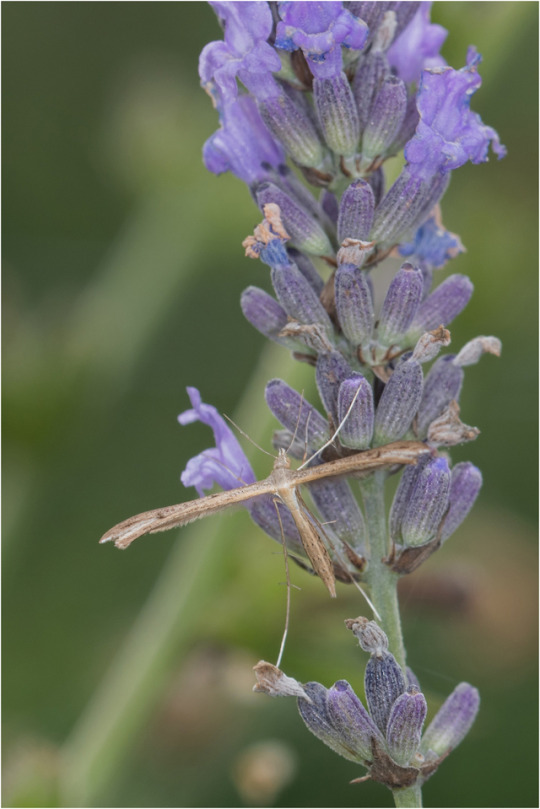
Art af Fjermøl - sands. Djævelsbid-fjermøl (Stenoptilia bipunctidactyla)
Hviler på Lavendel (Lavandula sp.).
Species of Plume Moth prob. Twin-spot Plume (Stenoptilia bipunctidactyla)
Resting on Lavender (Lavandula sp.).
#Djævelsbid-fjermøl#Stenoptilia bipunctidactyla#Stenoptilia#Fjermøl#Twin-spot Plume#Plume moth#Plume#Micro moth#Lepidoptera#Insekter#Insects#Insect#Insekt#Lavendel#Lavender#Lavandula sp.#Lavandula
3 notes
·
View notes
Photo
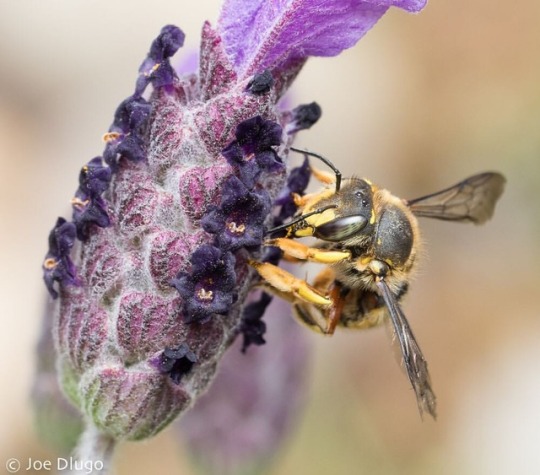
A wool carder bee (Anthidium sp.) on Spanish lavender (Lavandula stoechas). ~~~~~~~#woolcarder #anthidium #spanishlavender
18 notes
·
View notes
Text
Óleo essencial de lavanda: da planta ao óleo essencial
A lavanda (Lavandula sp.) é uma das plantas mais famosas do mundo. Ela é muito conhecida pela sua bela cor lilás e seu cheiro marcante, mas agradável. Entre suas utilizações, podemos citar a principal sendo através do seu óleo essencial para a aromaterapia, mas também como cosmético, medicamento, planta ornamental e até como iguaria culinária!… Continue a ler »Óleo essencial de lavanda: da planta ao óleo essencial
from Blog Faume https://ift.tt/3BVQcxp
from Faume https://ift.tt/2X42QeK
0 notes
Text
This Story Behind Deer Resistant Flowering Shrubs Will Haunt You Forever! | Deer Resistant Flowering Shrubs
Problems with deer?The Penn State Cooperative Extension has provided this account of deer aggressive plants. Note: There is no agreement that deer will not eat these plants, but they usually dont.A to CAgeratum (Ageratum houstonianum)Barrenwort (Epimedium sp.)Basil (Ocimum basilicum)Basket-of-Gold (Aurinia saxatilis)Bears Breeches (Acanthus mollis)Blue Fescue (Festuca ovina var. glauca)Blue Flax (Linum perenne)Blue Salvia (Salvia farinacea)Bugbane (Cimicifuga racemosa)Bugleweed (Ajuga sp.)
California Poppy (Eschscholzia californica)Canna (Canna hybrids)Catmint (Nepeta catarina)Chives (Allium schoenoprasum)Christmas Bracken (Polystichum acrostichoides)Cinquefoil (Potentilla sp.)Common Thrift (Armeria maritima)Cosmos (Cosmos bipinnatus)Crown Imperial (Fritillaria imperialis)
D to FDaffodil (Narcissus sp.)Dahlia (Dahlia sp.)Dead Nettle (Lamium maculatum)Dill (Anethum graveolens)Edging Lobelia (Lobelia erinus)Dusty Miller (Senecio cineraria)Evening Primrose (Oenothera sp.)Feather Reed Grass (Calamagrostis x acutiflora Karl Foerster)Feverfew (Chrysanthemum parthenium)Flowering Tobacco (Nicotiana alata)Foamflower (Tiarella cordifolia)Forget-Me-Not (Myosotis scorpioides)Fountain Grass (Pennisetum alopecuroides)Four-OClocks (Mirabilis jalapa)Foxglove (Digitalis sp.)
G to IGarden Phlox (Phlox paniculata)Garlic Chives (Allium tuberosum)Gerbera (Gerbera jamesonii)Ginger (Asarum sp.)Globe Thistle (Echinops sp.)Glory Lily (Gloriosa superba)Goldenrod (Solidago sp.)Hay-scentd Bracken (Dennstaedtia punctiloba)Heath (Erica sp.)Heather (Calluna sp.)Heliotrope (Heliotropium arborescens)Hellebore (Helleborus sp.)Hen and Chickens (Sempervivum sp. (spiny ones))Holly Bracken (Cyrtomium falicatum)Hyacinth (Hyacinthus orientalis)Icelandic Poppy (Papaver nudicaule)Iris (Iris sp.)
J to LJack-in-the-Pulpit (Arisaema triphyllum)Japanese Spurge (Pachysandra sp.)Joe-Pye Weed (Eupatorium purpureum)Ladys Mantle (Alchemilla vulgaris)Lambs Ears (Stachys byzantina)Larkspur (Consolida ambigua)Lavender (Lavandula sp.)Lavender Cotton (Santolina chamaecyparissus)Lily-of-the-Valley (Convallaria majalis)Lilyturf (Liriope sp.)Lungwort (Pulmonaria sp.)
M to OMaiden Grass (Miscanthus sinensis)Maximillian Sunflower (Helianthus Maximilliani)
This Story Behind Deer Resistant Flowering Shrubs Will Haunt You Forever! | Deer Resistant Flowering Shrubs – deer resistant flowering shrubs
| Allowed for you to our weblog, with this occasion I will show you about keyword. And after this, this can be a initial photograph:
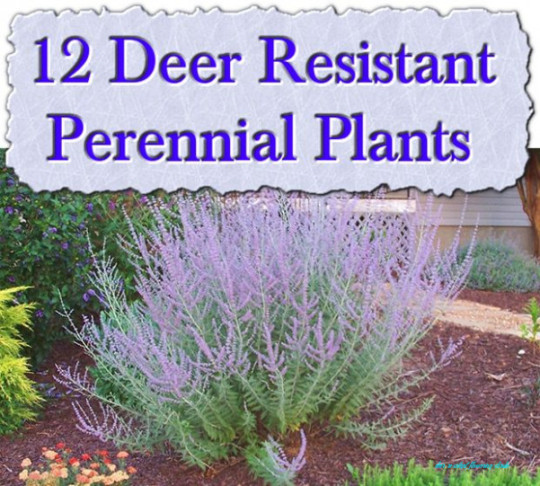
17 Deer Resistant Perennial Plants | Jardinería, Jardines, Centros .. | deer resistant flowering shrubs
Why don’t you consider impression previously mentioned? is actually that awesome???. if you’re more dedicated and so, I’l m show you a few image all over again underneath:
So, if you wish to get all of these awesome shots related to (This Story Behind Deer Resistant Flowering Shrubs Will Haunt You Forever! | Deer Resistant Flowering Shrubs), click save icon to store the pics to your laptop. These are all set for download, if you appreciate and wish to obtain it, simply click save badge in the article, and it’ll be directly downloaded to your laptop computer.} Finally if you like to find unique and latest image related with (This Story Behind Deer Resistant Flowering Shrubs Will Haunt You Forever! | Deer Resistant Flowering Shrubs), please follow us on google plus or book mark this website, we try our best to present you daily up grade with fresh and new pictures. We do hope you like staying here. For many up-dates and latest news about (This Story Behind Deer Resistant Flowering Shrubs Will Haunt You Forever! | Deer Resistant Flowering Shrubs) graphics, please kindly follow us on tweets, path, Instagram and google plus, or you mark this page on bookmark section, We attempt to give you up grade regularly with fresh and new images, enjoy your browsing, and find the ideal for you.
Thanks for visiting our website, articleabove (This Story Behind Deer Resistant Flowering Shrubs Will Haunt You Forever! | Deer Resistant Flowering Shrubs) published . At this time we are pleased to declare we have discovered an extremelyinteresting topicto be reviewed, that is (This Story Behind Deer Resistant Flowering Shrubs Will Haunt You Forever! | Deer Resistant Flowering Shrubs) Most people attempting to find info about(This Story Behind Deer Resistant Flowering Shrubs Will Haunt You Forever! | Deer Resistant Flowering Shrubs) and of course one of these is you, is not it?
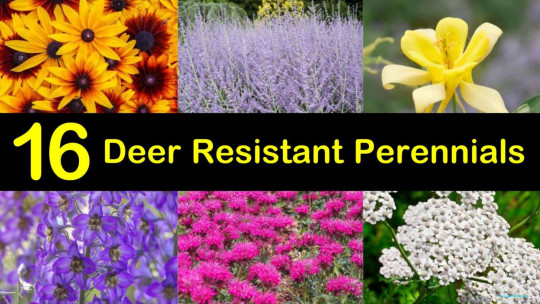
17 Deer Resistant Perennials that Won’t Be on the Wildlife Menu – deer resistant flowering shrubs | deer resistant flowering shrubs
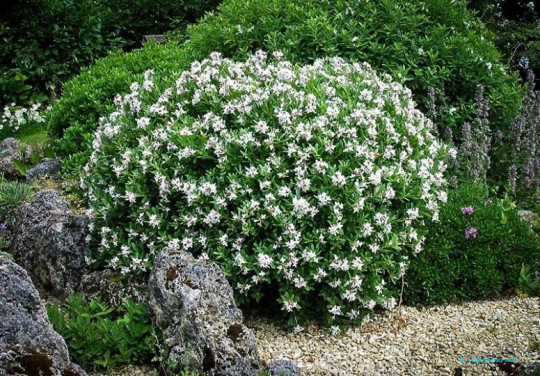
Top 17 Deer Resistant Flowering Shrubs – Deer Repellent – deer resistant flowering shrubs | deer resistant flowering shrubs

Top 17 Deer Resistant Plants for Your Kalamazoo Landscape – R&A .. | deer resistant flowering shrubs
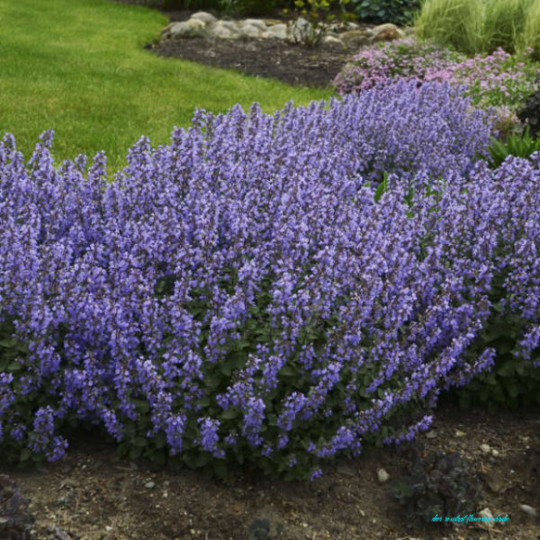
Photo Essay | Deer and Rabbit Resistant Perennials | Perennial .. | deer resistant flowering shrubs
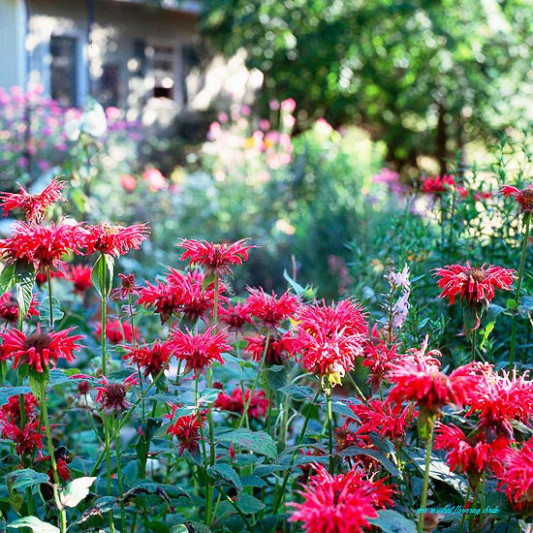
Top Deer-Resistant Plants for Your Region | Better Homes & Gardens – deer resistant flowering shrubs | deer resistant flowering shrubs
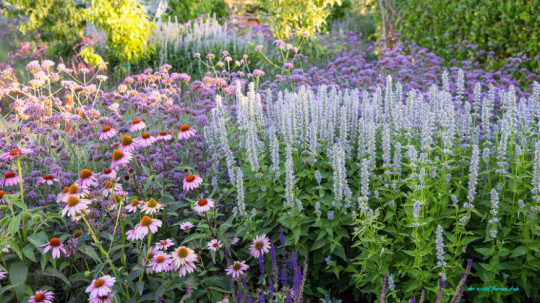
Top Critter- and Deer-Resistant Plants – Sunset Magazine – deer resistant flowering shrubs | deer resistant flowering shrubs
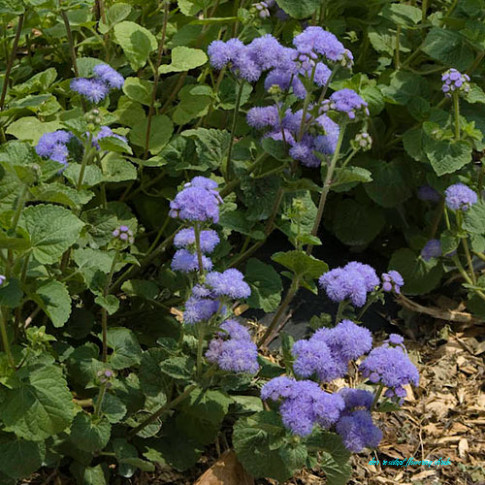
Landscape Plants Rated by Deer Resistance (Rutgers NJAES) – deer resistant flowering shrubs | deer resistant flowering shrubs

17 Beautiful Deer Resistant Shrubs – Grow Beautifully – deer resistant flowering shrubs | deer resistant flowering shrubs

Deer-Resistant Annuals: Colorful Choices for Sun and Shade – deer resistant flowering shrubs | deer resistant flowering shrubs
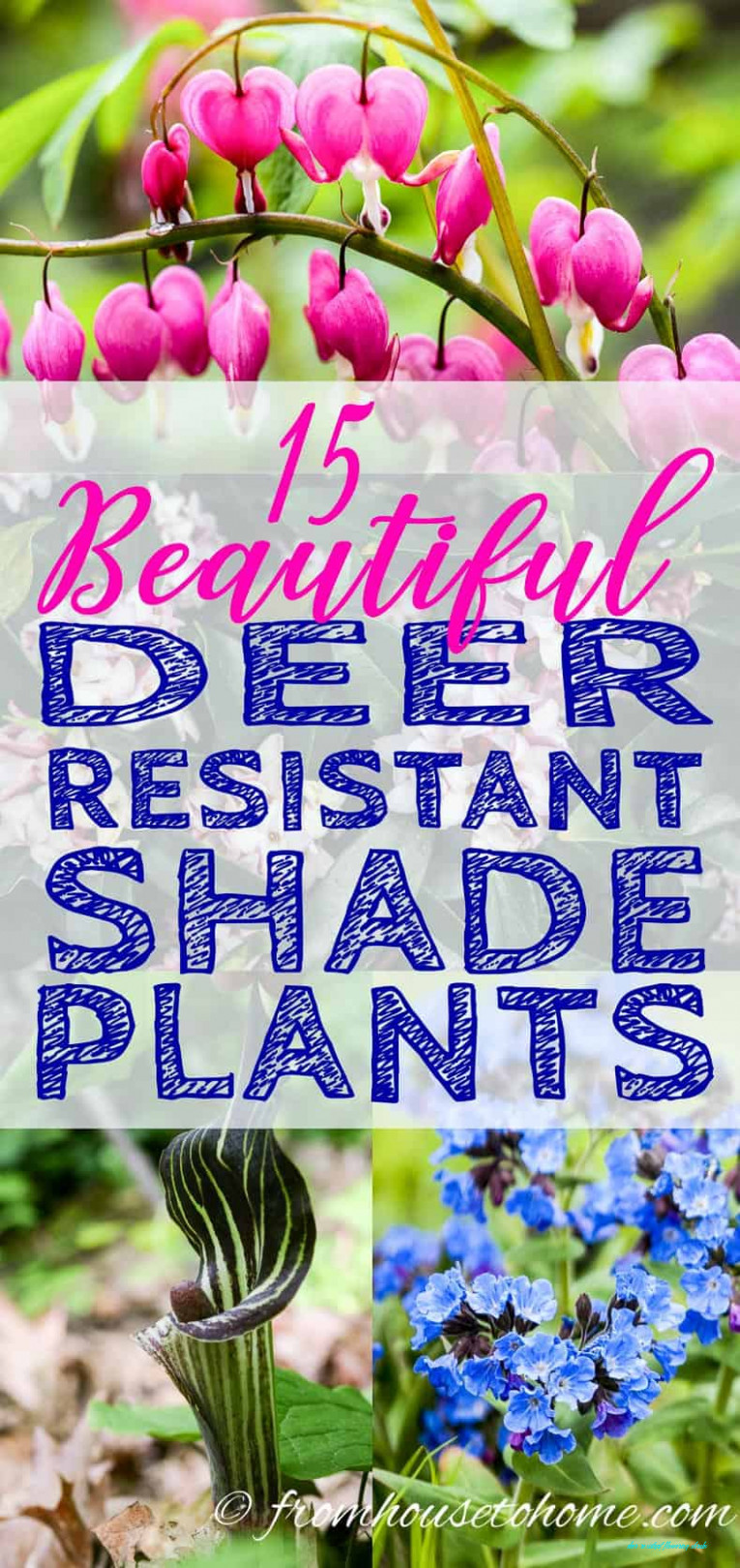
17 Beautiful Deer Resistant Shade Plants To Grow In Your Garden .. | deer resistant flowering shrubs
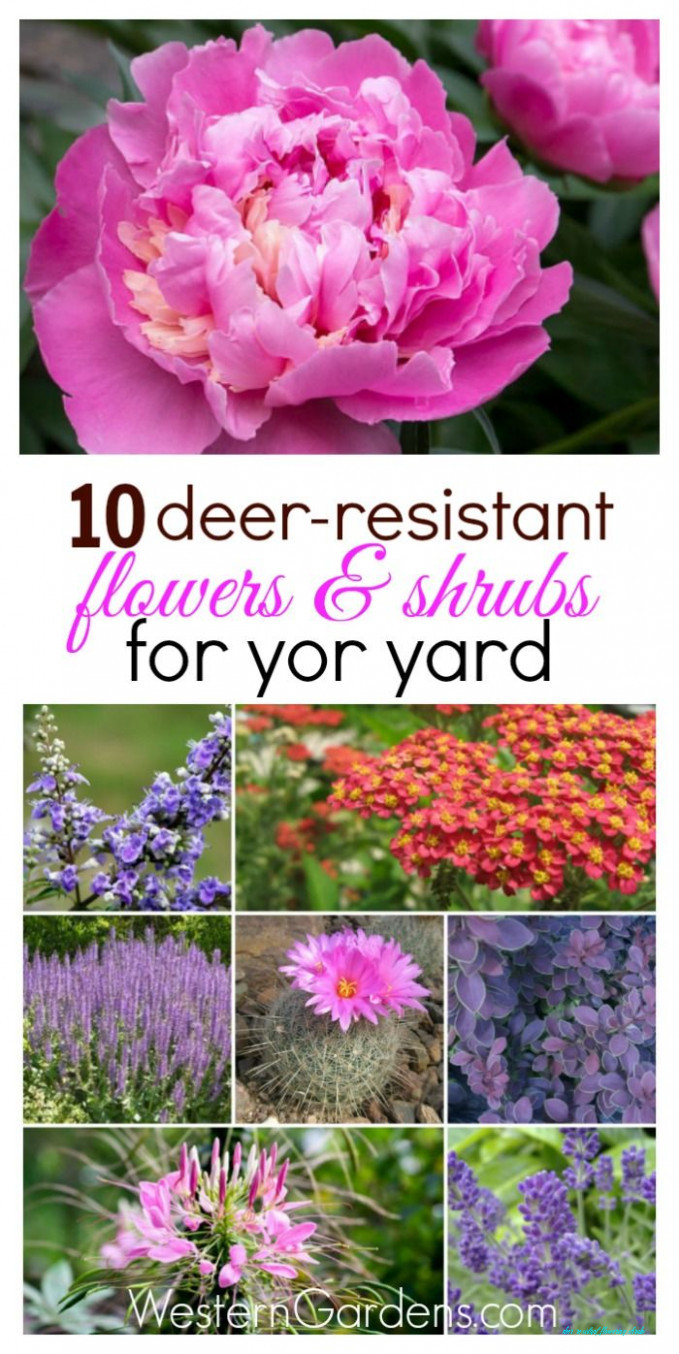
17 Deer-Resistant Plants | Deer resistant garden, Deer resistant .. | deer resistant flowering shrubs
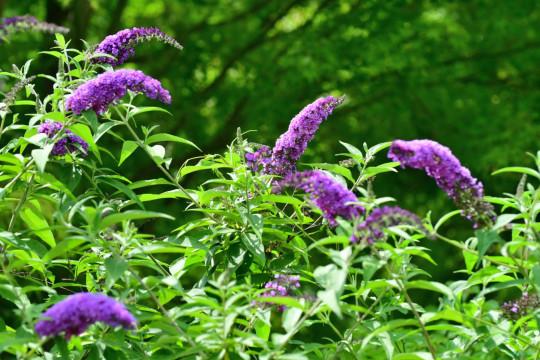
17 Best Deer-Resistant Shrubs for Landscaping – deer resistant flowering shrubs | deer resistant flowering shrubs
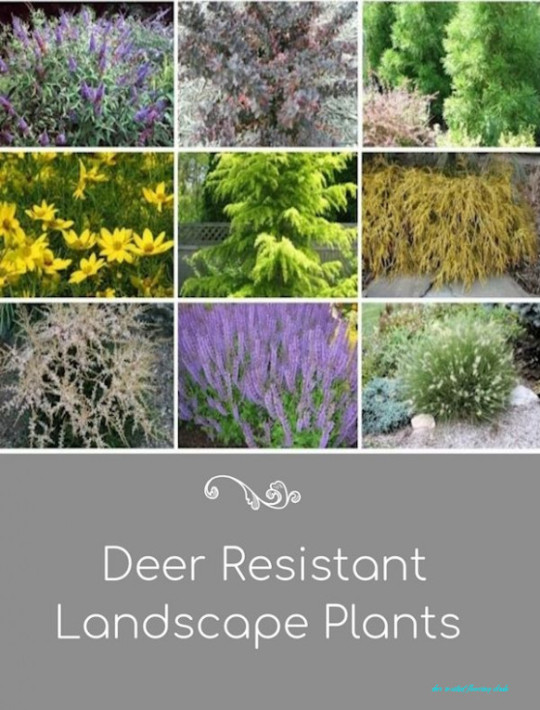
A GUIDE TO NORTHEASTERN GARDENING: Deer Resistant Plants in the .. | deer resistant flowering shrubs

Deer-Resistant Design: Fence-free Gardens that Thrive Despite the .. | deer resistant flowering shrubs
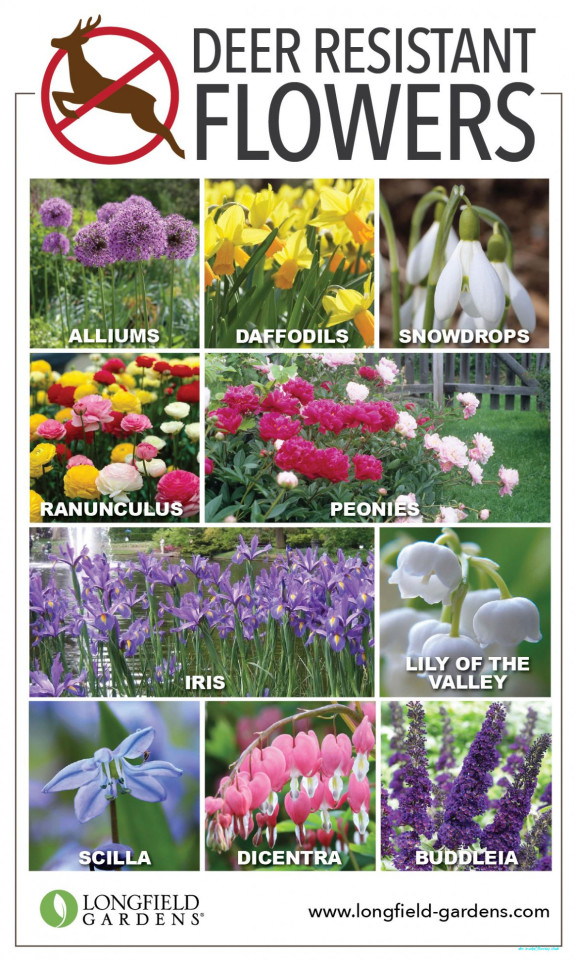
Deer Resistant Bulbs and Perennials (With images) | Deer resistant .. | deer resistant flowering shrubs
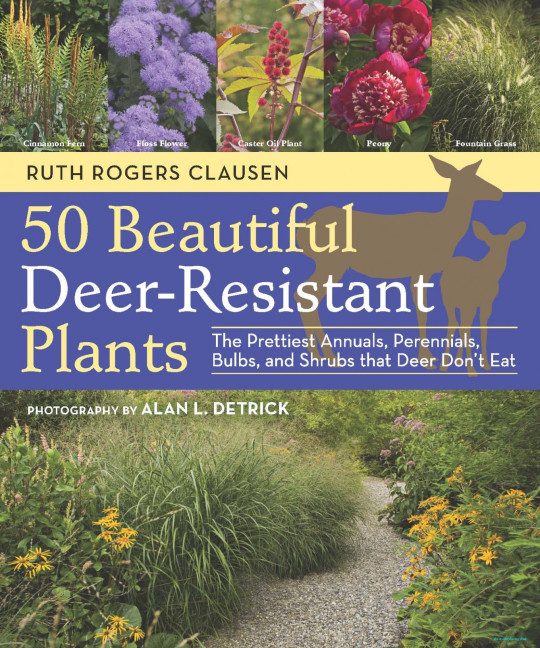
17 Beautiful Deer-Resistant Plants: The Prettiest Annuals .. | deer resistant flowering shrubs
The post This Story Behind Deer Resistant Flowering Shrubs Will Haunt You Forever! | Deer Resistant Flowering Shrubs appeared first on Flower Nifty.
from Wallpaper Nifty https://www.flowernifty.com/this-story-behind-deer-resistant-flowering-shrubs-will-haunt-you-forever-deer-resistant-flowering-shrubs/
0 notes
Text
Natural Alternatives Infusion - Complete Guide Home Remedies

Natural Alternatives Infusion - Complete Guide Home Remedies

Remember to always consult your doctor before using any alternative or home remedies. These treatments are not intended or recommended for use to treat serious conditions.
Acne
After washing, rinse the skin with an infusion of chamomile (Chamaemelum nobile) which is purifying, yarrow (Achillea millefolium) which helps eliminate toxins, catnip (Nepeta cataria) which is antiseptic, lavender (Lavandula sp) which is calming and antiseptic or thyme (Thymus vulgaris) which is a strong germ-killer. Dab spots with neat lemon juice to kill germs, cool inflammation and improve blood circulation. Apply a calendula ointment to reduce inflammation and improve local healing. Consider your diet and cut out sugars, fats, and dairy products.
Appetite, lack of
Caraway (Carum carvi) and ginseng (Panax ginseng) are powerful appetite stimulants, and a standard infusion of either can be drunk half an hour before a meal or whenever desired. Herbalists have had some success with both herbs in treating serious cases of anorexia nervosa. Hore-hound (Marrubium vulgare) tea, 1 cup (225 ml) taken three times a day, will stimulate the appetite after the flu.
Breastfeeding
To stimulate the flow of milk, a standard infusion of the leaves and seed of borage (Borago officinalis), dill seed, aniseed, and fennel seed three times a day can help. A decoction of fenugreek seed is a strong stimulant. Simmer 1 1/2 tsp (8ml) seed in 1 cup (225 ml) water for 10 minutes and drink three times a day. A tsp (5 ml) aniseed or honey will improve the taste. Another powerful stimulant is found in the flowering top of goat's rue (Galega officinalis): increases in milk flow of up to 50 percent have been recorded. Infuse 1 tsp (5 ml) dried leaves in 1 cup (225 ml) boiling water for 10 minutes and drink twice a day.
Bruises and Sprains
Apply distilled witch hazel (purchased from a chemist) with sterile cotton wool as soon as possible to small bumps and bruises. This will halt the swelling. Comfrey oil or ointment is good for messy scrapes, bruises, and sprains. A poultice of comfrey leaves (Symphytum officinale) will reduce bruising and speed healing of sprains and fractures. It's best not used on deep wounds, as comfrey is such a powerful tissue healer that the surface skin may heal before the wound has healed deeper down. Comfrey also encourages the good formation of scar tissue. Both a lotion of St John's wort (Hypericum perforalum) and arnica (Arnica montana) ointment is excellent for sprains and bruises, especially if there is any pain or inflammation of the skin. Caution: Do not use arnica where the skin is broken. An ointment of calendula petals, agrimony (Agrimonia eupatoria) or elder leaves (Sombucus nigra) is soothing and healing for bruises, sprains and other minor wounds.
Burns, Minor
Immediately apply the cool inside surface of an aloe vera leaf to reduce pain, speed healing and leave a protective seal against infection. Later, apply calendula as a cool compress or ointment to soothe and heal. Major burns are an emergency: summon professional help at once. Cool the burn with cool (not ice-cold) water while waiting, and give the patient 6 drops Bach Flower Rescue Remedy and reassure him.
Chilblains and cold limbs
To warm hands and feet, massage gently with warmed macerated oil of honeysuckle flowers (Lonicera caprifolium). This will bring an increased flow of blood to the surface skin. For a foot, bath to improve the circulation of cold feet and help chilblains, which are caused by poor circulation, use an infusion of 1 tbsp (15 ml) freshly ground mustard seed to 4 pints (2 liters) water. Cayenne seed powder is also a powerful stimulant to the circulatory system and helps blood flow to the extremities. In an ointment, it can be used in moderation for unbroken chilblains. Elder leaf (Sambucus nigra) ointment is useful for chilblains. Heat 1 part fresh leaves with 2 parts of petroleum jelly until the leaves are crisp. Strain and label for storage. To improve bad circulation, drink rosehip or horsetail (Equisetum arvense) or buckwheat (Fagopyrum esculentum) tea daily to strengthen small capillaries. Some spices and strongly flavored herbs, such as black pepper, cloves, cinnamon, coriander, cumin, freshly grated root ginger, garlic, marjoram, rosemary, and thyme, improve circulation. Include them frequently in your diet, especially in the winter months.
Colds and fevers
To protect against colds, eat or take the juice of a raw clove of garlic three times a day. Essential oils are very efficient at destroying harmful bacteria and viruses. They can also be used in steam inhalants or as a room spray. Rosehip tea, said to be high in vitamin C, can be used to build resistance to colds and other infections. Cayenne powder is also excellent at warding off colds as it strengthens and stimulates the circulatory and digestive system. Infuse 1/2 - 1 tsp (3 —5 ml) cayenne powder in 1 cup (225 ml) boiling water for 10 minutes. Strain and take 1 tbsp (15 ml) of this mixture topped up with hot water when needed or before each meal. At the first sign of a cold, take a mixture of elderflower (Sambucus nigra), peppermint (Mentha piperita) and yarrow (Achillea millefolium). Infuse 1/2 tsp (3 ml) of each together in 1 cup (225 ml) boiling water for 20 minutes. Strain, add 1 tsp (5 ml) honey and 1/4 tsp (2ml) cayenne pepper. This should decrease the intensity and the discomfort of a cold or flu. If the mixture benefits you, the herbs are worth storing as a dried blend for winter use. Another remedy to take at the earliest possible moment is 9 small horehound leaves (Marrubium vulgare) chopped finely and eaten raw with 1 tbsp (15 ml) honey. Repeat as necessary. To fight colds and flu, take hot lemon and honey as often as desired as lemon has antibacterial properties. Take frequent hot drinks of elderflower (Sambucus nigra), peppermint (Mentha piperita) or yarrow (Achillea millefolium) tea to promote perspiration and to reduce the temperature. Elderflower is also useful for reducing any nasal inflammation from catarrh. If this is accompanied by a penetrating chill, add grated root ginger or cayenne. Black pepper sprinkled over food also has a restorative effect, or you could take an infusion of mustard seed, 1/4 tsp (2ml) powder infused for 5 minutes in 1 cup (225 ml) boiling water, three times a day, or add 4 pints (2 litres) of mustard infusion to bathwater. For catarrh and flu, goldenrod (Solidago virgaurea) is good because it is antiseptic, expels catarrh and soothes inflammation. Infuse 2 tsp (10ml) dried flowering stalks in 1 cup (225 ml) boiling water for 10 minutes and drink a cup (225 ml) three times a day. Goldenseal root (Hydrastis canadensis) is also excellent for its healing and tonic powers on the mucous membranes. Drink an infusion of 1/5 - 1 tsp (3—5ml) of powdered root in 1 cup (225 ml) boiling water three times a day. Do not take this during pregnancy. You can also try a hot infusion of borage (Borago officinalis), coltsfoot (Tussilago farfara), comfrey (Symphytum officinale), or ground ivy (Glecoma hederacea) to relieve catarrh. Relieve stuffiness by inhaling the vapors from a steam bath of chamomile flowers (Matricaria recutita) or eucalyptus leaves (Eucalyptus globulus). A pinch of basil taken as snuff can bring back your sense of smell. When your temperature has returned to normal, drink a warm infusion of clivers (Galium aparine) three times a day to continue a mild perspiration action, help prevent gastric disturbance and promote restful sleep. Begin taking vegetable juices and progress to homemade vegetable soup, fresh fruit, and salads. Reintroduce heavier foods slowly to avoid overloading the digestive system when it is still vulnerable. Horehound tea restores an appetite that may need stimulating after flu. If lethargy or depression follows, take lemon balm (Melissa officinalis) or vervain (Verbena Officinalis) tea. If this persists after a few days, seek professional advice.
Colic
First choice for children is dill water. If you anticipate digestive discomfort, try giving the baby a teaspoonful before she or he feeds. Otherwise, give a teaspoonful as required.
Constipation
Long-term constipation, or any unusual changes in bowel habits, should be discussed with a medical herbalist or doctor. Roughage in the diet and regular exercise are important for healthy functioning bowels, while tension and emotional worries can contribute to constipation. Herbs can be used for short-term relief but underlying causes should be addressed. Syrup of figs is a valuable remedy, taken as required. An infusion of crushed flaxseed (Linum usitatissimum) has a purgative action which brings relief: drink 1 cup (225 ml) morning and evening. Licorice root (Glycyrrhiza glabra) is a mild and pleasant laxative. Chew root as desired or make a decoction of 1 tsp (5 ml) root in 1 cup (225 ml) water and take three times a day. Stewed rhubarb in moderate doses is a gentle laxative for children; large doses cause a more powerful reaction. Rosehip tea is also a mild laxative. Use a decoction or infusion with halved hips, but strain through filter paper to remove the seeds and tiny hairs which are an irritant to the body. Drink whenever necessary.
Coughs
To fight bronchial infections, eat raw garlic cloves for their strong antibiotic content. To help dispel fluid and mucus from the lungs and air passages, horehound (Marrubium vulgare) is the first choice. Drink a hot standard infusion three times a day. Another important herb in the treatment of lung problems, coughs and colds, and asthma is coltsfoot (Tussilago farfara). An infusion of the leaves and flowers will soothe the bronchi, encourage tissue healing and protect the delicate mucous membranes from further irritations. To ease cough spasms and help expel mucus, make cowslip flower (Primula veris) syrup or decoct cowslip root, simmering for 5 minutes, and drink 1 cup (225 ml) three times a day. It can be combined with coltsfoot and aniseed (Pimpinella anisum). Aniseed has an expectorant action and can also help make cough mixture more palatable. For an irritating bronchial cough with a great deal of catarrh, the expectorant, antiseptic action of elecampane root (Inula helenium) along with the soothing effect of its mucilage makes it an excellent remedy, especially for children. Infuse 1 tsp (5 ml) shredded root in 1 cup (225 ml) cold water for 9 hours. Drink it hot three times a day. An irritating cough can also be soothed by an infusion of powdered marshmallow root (Althaea officinalis). It combines well with horehound (Marrubium vulgare) and liquorice (Glycyrrhiza glabra). For dry coughs, combine coltsfoot with horehound and mullein (Verbascum thapsus). To reduce catarrh in the lungs, apply a poultice of freshly ground mustard seed. Mix 4oz (110 g) seeds with warm water to make a thick paste. Apply the paste between two pieces of gauze with the bottom piece dampened so that it does not stick to the skin. Leave for one minute only. If skin is reddened, massage with an appropriate aromatherapy oil or any vegetable oil. Flax seed can be used with mustard to help reduce lung catarrh. A tea of plantain leaves (Plantago major) is a gentle expectorant and the herb is widely cultivated by Russian pharmaceutical companies. A standard infusion of star anise (Illicium verum) has expectorant and antibacterial properties. It mixes well with other cough remedies.
Cuts and abrasions
First clean the cut by soaking in witch hazel diluted with 4 parts, water or an antiseptic herbal infusion; elder leaves (Sombucus nigra) are excellent. A speedy alternative is to add 3 drops thyme or rosemary oil or 1 tsp (3 ml) tincture of calendula to 1 cup (225 ml) hand-hot, boiled water. The antiseptic wash can also be gently swabbed on with a series of sterile cotton wool balls. A dose of 4 drops Bach Flower Rescue Remedy has a calming effect, while an infusion of lady's mantle (Alchemilla vulgaris) can be applied as a compress to arrest bleeding. For slow-healing wounds, apply a compress or poultice of comfrey (Symphytum offidnale), self-heal (Prunella vulgaris) or yarrow (Achillea millefolium). Add plantain leaves (Plantago major) for their antibiotic properties. If applying a poultice to an open wound, dip leaves briefly in boiling water to sterilize them. To continue treatment, a soft ointment of comfrey, calendula or agrimony (Agrimonia eupatoria) is soothing and healing.
Cystitis
Drink a standard infusion of silver birch leaves (Betula pendula) against cystitis and other infections of the urinary tract, and to remove excess water from the system. It can be combined with bearberry (Arctostaphylos uva-ursi). A decoction of sweet Joe Pye root (Eupatorium purpureum), drunk three times a day, is helpful for urinary infections including cystitis. A standard infusion of yarrow (Achillea millefolium) is antiseptic to the urinary tract and assists recovery from cystitis.
Depression
A lavender flower infusion, taken three times a day, can be effective in clearing depression especially combined with rosemary (Rosmarinus officinalis) or skullcap (Scutellaria lateriflora). Rosemary is useful if your depression results from psychological tension or if you are feeling rundown after an illness. Drink a standard infusion. It also combines well with a skullcap. Take a standard infusion of vervain (Verbena officinalis) to ease depression and melancholy which may follow flu. It also combines well with a skullcap.
Diarrhea (adult)
Sudden, painful diarrhea and chronic diarrhea needs expert medical attention. Other cases are often the body's way of attempting to dump toxic material as fast as possible. Most herbal remedies attempt to assist this action while soothing the bowel and reducing inflammation. Self-heal (Prunella vulgaris) has a gentle action that soothes inflamed mucous membranes. Drink an infusion three times daily. The same dose can be taken of agrimony (Agrimonia eupatoria) and coriander seed infusion.
Diarrhea (children)
Always seek the advice of a trained medical practitioner for persistent children's diarrhea. A standard agrimony (Agrimonia eupatoria) infusion is a specific herbal remedy for childhood diarrhea, as is a decoction of bistort root (Polygonum bistorta). Either can be drunk, 1 cup (225 ml) three times a day. An infusion of coriander also eases diarrhea safely for children. Use 1 tsp (5 ml) bruised seed infused for 5 minutes and drink before meals or three times a day.
Digestion
Most flavoring and seasoning herbs stimulate the flow of digestive juices in the stomach and intestine, and this increases the efficiency with which fats are broken down into fatty acids and nutrients are absorbed by the body. Classic herb partnerships reflect this benevolent fact: rosemary helps the digestion of fatty lamb, fennel assists the digestion of oily fish and horseradish aids the digestion of beef. Many of the aromatic seeds are useful digestives. Take 1 tbsp (15 ml) ground aniseed boiled in 1 cup (225 ml) milk and drink this twice a day to improve the digestive system. Cardamom increases the flow of saliva and adds a pleasing aroma to digestive mixtures. Take 1 cup (225 ml) of infusion half an hour before each meal. Hot peppermint tea can be taken after a meal. A dish of digestive herbs including aniseed, caraway, dill and fennel seed is sometimes offered at the end of an Indian meal and greatly assists the body to digest rich foods. If there is persistent or severe pain with digestion, consult a medical herbalist or doctor; if there are regular difficulties with indigestion not caused by disease, then rushed eating, an unbalanced diet or tension may be the cause, and it is sensible to consider solutions to these while taking herbs to alleviate the problem.
Earache
Eardrops made from a weak infusion of golden-seal (Hydrastis canadensis) soothe earache. Mullein (Verbascum thapsus) can be added to the infusion. Where catarrh of the middle ear is causing tinnitus, an infusion of ground ivy (Glecomu hederacea) flowering stems is helpful.
Eczema, rashes and itchy skin
Make a weak infusion of golden-seal root (Hydrastis canadensis) and use externally as a wash or compress for eczema and itchy skin. The expressed juice of chickweed (Stellaria media) will soothe sores or itchy patches from eczema or psoriasis and will tone and invigorate the skin, while a poultice of crushed flaxseed (Linum usitatissimum) brings relief to shingles and psoriasis. For children's eczema and nervous eczema, nettle (Urtica dioica) is specifically recommended by herbalists. Drink an infusion three times a day. For weeping eczema, drink an infusion of the flowering tops of the heartsease (Viola tricolor) three times a day. It combines well with nettle and red clover (Trifolium pretense). Comfrey oil often brings relief from patches of itchy rough skin and evening primrose oil can help.
Flatulence
Seeds of aniseed, caraway or fennel are all effective at expelling wind but even more so in combination. Infuse crushed mixed seed and drink a cup (225 ml) slowly 30 minutes before each meal. Many spice seeds help disperse wind; cloves or allspice can be chewed or infused as often as desired. Black pepper sprinkled on food removes wind. Infusions of root ginger, cardamom and coriander have pleasant aromas and relieve griping pains of wind. Star anise (Illicium verum) dispels wind and is often included with dill and fennel seed in colic preparations for young babies. Take a standard infusion three times a day. Lemon balm (Melissa offidnalis) relieves flatulent spasms, and a dose of 1/4 - 1/2 tsp (1—3 ml) powdered angelica root (Angelica archangelica) will quickly expel gas from the stomach and bowel with a gentle action that is safe for children.
Headlice
Combine 25 drops of rosemary oil, 25 drops of lavender oil, 13 drops of geranium (Pelargonium) oil and 12 drops of eucalyptus oil in 3 fl oz (75 ml) vegetable oil. Divide the hair into small sections and saturate each section with the mixture down to the roots. Pile long hair on top of the head ensuring that every bit is oiled. Wrap plastic around the head and behind the ears to stop the oils from evaporating. Make sure that small children cannot move the plastic anywhere near the nose or mouth and restrict breathing. Leave it on for 2 hours. Remove the plastic, add shampoo and rub in well, rinse thoroughly and comb through with a fine nit-comb. Repeat three days later.
Hemorrhoids
The first choice for mild hemorrhoids is pilewort or lesser celandine (Ranunculus ficaria). It shrinks and soothes the swollen veins around the anus. Drink a standard infusion of the root or apply an ointment made with a strong infusion. For bleeding hemorrhoids, apply an ointment of self-heal (Prunella vulgaris). An infusion of horse chestnut fruits (Aesculus hippocastanum) drunk three times a day or applied as a compress will tone and strengthen veins and help heal hemorrhoids.
Hangover
Lemon in water or in orange juice for extra vitamin C, hot peppermint or wild thyme tea can alleviate the discomfort. A drink of yarrow (Achillea millefolium) and elderflower (Sambucus nigra) tea will help the body to eliminate toxins.
Hay fever
Sufferers of hay fever and other allergies may benefit from an infusion of goldenrod (Solidago virgaurea). Take half a cup (125 ml) four times a day. The irritated mucous membranes are relieved and soothed by drinking a warm infusion of hyssop (Hyssopus officinalis), lavender (Lavandula species), marjoram (Origanum marjorana) or thyme (Thymus vulgaris). Apply cold compresses of witch hazel diluted in 4 parts boiled water to soothe the eyes. Hot mullein flower (Verbascum thapsus) tea and eyebright (Euphrasia rostkoviana) tea will help eliminate excess mucus, and eyebright will reduce redness around the eyes. Drink three times a day. Red and sore eyelids may result from other conditions, if symptoms persist, consult a qualified herbalist.
Headaches and migraines
Herbs may bring relief though they will not remove the cause. Feverfew leaf (Tanacetum parthenium) has justifiably become the primary remedy for migraines. A small to medium, fresh or frozen, the leaf is eaten between slices of bread (it can cause mouth ulcers in very sensitive people) three times a day has been found to reduce the intensity or frequency of 70 percent of migraines (usually in sufferers who gain relief from warmth applied to the head). Its action is cumulative and can take up to six months to show results. Do not take during pregnancy as it can stimulate the uterus. Alternatively, take half a cup (125 ml) of leaf tea twice a day to reduce the pain of migraines. Lavender (Lavandula species) is useful for stress-related headaches and combines well with valerian (Valeriana officinalis). Drink an infusion of lavender flowers three times a day. A standard infusion of valerian is useful in tension headaches when it combines well with skullcap (Scutellaria lateriflora).
High Blood Pressure
High blood pressure is a serious condition that must be monitored by a qualified medical person. Ripe hawthorn berries (Crataegus monogyna) are a gentle yet powerful tonic for the heart and circulation, bringing both low and high blood pressure back to normal when used over a long period. Infuse 2 tsp (10ml) berries for 20 minutes in 1 cup (225 ml) boiling water and drink three times a day for an extended period. For high blood pressure, hawthorn combines well in an infusion with lime blossom (Tilia cordata) and yarrow (Achillea millefolium). Yarrow reduces high blood pressure by dilating peripheral blood vessels. Chronic hypertension responds well to 1 cup (225 ml) dandelion leaves (Taraxacum officinale) infusion taken three times a day. Garlic is reliable, but it will take four weeks for any drop in blood pressure. Eat raw cloves up to six times a day.
Insomnia
A cup (225ml) of hop (Humulus lupulus) tea taken before retiring to bed is a useful sedative for insomnia except for anyone suffering from depression. It combines well with valerian (Valeriana officinalis) which reduces tension and anxiety, and passionflower leaves (Passiflora incarnata). Chamomile (Chamaemelum nobile) tea and catnip (Nepeta cataria) tea are traditional relaxing bedtime drinks that will reduce anxiety and promote restful sleep. Passionflower tea and orange blossom tea can also help insomniacs.
Kidney and Liver Complaints
Dandelion (Taraxacum officinale) is the ideal balanced diuretic as it supplies potassium, a substance lost during diuretic action. Decoct 1 tbsp (15 ml) root in 1 cup (225 ml) water and drink three times a day.
Menstrual Cycle
The best remedy for the dull headache, irritability, mild depression, fluid retention or breast discomfort experienced by many women just before their period is evening primrose oil. Tests at a London hospital indicated that 85 percent of those in the trial experienced improvement. The herb (Oenothera biennis) is easy to grow but extracting the oil from the seed is complex, so purchase capsules from a health shop. Those that also contains marine oil are particularly recommended. Skullcap (Scutellaria lateriflora), chamomile (Matricaria recutita) and lime blossom (Tilia cordata) is safe teas to soothe and reduce the discomfort of PMT (premenstrual tension). Take an infusion three times a day to relieve the symptoms. For menstrual cramps drink an infusion of chamomile or valerian (valeriana officinalis) three times a day, or half a cup (125 ml) of feverfew (Tanacetum parthenium) tea taken twice a day. For cramps with a feeling of heaviness, a hot infusion of raspberry leaf (Rubus idaeus) tea is recommended. To help reduce period pains and excessive bleeding, try lady's mantle leaves (Alchemilla vulgaris), taken in a double-strength infusion three times a day. This also eases changes of the menopause. To help relieve menopausal symptoms, try dried berries of the chaste tree (Vitex agnus-castus), which normalize the activity of sex hormones. They are also of benefit in PMT and help to normalize the body's natural balance after taking contraceptive pills. Infuse 1 tsp (5 ml) berries for 15 minutes; drink 1 cup (225 ml) three times a day. Motherwort (Leonurus cardiaca) reduces the discomfort of menopause. When symptoms include irritability and anxiety, St John's Wort (Hypericum perforatum) is recommended. Drink a standard infusion of flowering tops three times a day.
Muscles and Joints
The Essential oil of fennel is one of several oils which, used in massage oil, will ease muscular pains. The moist inside surface of fresh silver birch bark (Betula pendula) applied over the area will ease painful muscles, while a poultice of mustard seed stimulates circulation and relieves muscular and skeletal pain. An ointment or poultice of wintergreen leaves (Gaultheria procumbens) has painkilling and anti-inflammatory properties that are excellent for chronic muscular problems. If you suffer from muscular cramps, a standard infusion of valerian (Valeriana officinalis) will bring relief.
Nappy Rash
If practicable, expose the baby's bottom to fresh air frequently. A cool compress of calendula or chamomile (Matricaria recutita) can be laid on sore areas for short periods. Use a lotion or ointment made with calendula, comfrey (Symphytum offincinale) or marshmallow (Althaea officinalis) to soothe the skin and promote rapid healing.
Nausea
Freshly grated ginger or powdered cinnamon bark infused on their own or sprinkled in other teas can be taken whenever necessary to relieve nausea and vomiting. Cloves, as a flavoring in food or drunk as an infusion, will allay nausea and vomiting while stimulating the digestive system. Infuse about 10 cloves in 1 cup (225 ml) boiling water for 10 minutes and take as required.
Nervous Tension
Unlike tranquilizers, herbs that work to relax nervous tension also counter stress by reviving and toning the central nervous system. The two finest treatments are skullcap flowering top (Scutellaria lateriflora), which is suitable for a wide range of nervous complaints and valerian root (Valeriana officinalis), which is suitable for nervous spasms and tremors, phobias, insomnia, and restlessness. Fortunately, they work well together. Take an infusion individually or in combination. Take 1 cup (225 ml) infusion up to three times a day or half a cup (125 ml) every three hours in times of great stress, but not for long periods of time. A standard infusion of borage leaves (Borago officinalis) is a restorative tonic to the adrenal glands, which are increasingly exposed to stress. Borage flowers and leaves in wine have a traditional reputation for bolstering courage. The combination seems to cause a significant rise in the blood-adrenalin level, and a wine-glassful (150ml) will relieve nervous tension during times of stress. After a hectic day, try drinking a tea of ginseng (Panax ginseng), lime blossom (Tilia cordata) or lavender (Lavandula species) to calm and tone the nervous system. Lime and lavender combine well to combat nervous exhaustion, while lemon balm (Melissa officinalis) relieves tension and stressful states with mild antidepressant action. It combines well with lavender flowers and lime blossom. Take a cup (225 ml) of mixed teas morning, evening and when required. Wood betony (Stachys officinalis) strengthens the central nervous system and is mildly sedative, being especially good for headaches and neuralgia of a nervous origin. Take 1 cup (225 ml) tea three times a day or combine it with a skullcap. For relaxants, try chamomile (Chamaemelum nobile) which can be drunk as desired, and cowslip (Primula veris), which is a relaxing sedative for stress-related tension. Make an infusion of the petals and drink 1 cup (225 ml) three times a day. It can be combined with lime blossom or skullcap. To ease the tension a standard infusion of St John's wort (Hypericum perforatum) has pain-reducing and sedative properties, making it useful for anxiety-related conditions unless there is also depression. Rosemary, on the other hand, is a stimulant to the nervous system and useful for psychological tension which is causing depression.
Rheumatism and Arthritis
The causes of these ailments are complex, and a qualified herbalist should be consulted to discover which aspects of diet or lifestyle may be contributing to the problem. Devil's claw (Harpagophytum procumbens) has been found to be effective in many cases: it appears to detoxify the body and to stimulate the body's immune system. So far, no harmful side-effects have been discovered but it can be nauseous. Decoct I —1 tsp (3 —5 ml) root in 1 cup (225 ml) water and boil for 15 minutes. Drink three times a day for at least a month to assess its effect. To treat rheumatoid arthritis, try an infusion of celery seed, which helps to counter the acid in the blood. Take 1 cup (225 ml) three times a day. It works well combined with dandelion root (Taraxacum offidnale) or devil's claw. A standard infusion of valerian (Valeriana officinalis) will relieve the pain of rheumatism, and a double-strength infusion of chickweed (Stellaria media) steeped for 5 minutes has brought relief to some. One of the beneficial side-effects noticed by a significant number of patients using feverfew (Tanacetum parthenium) to treat migraine was a reduction in their pain from arthritis. Try a dose of 1 leaf in a sandwich three times a day for up to six months (but not during pregnancy). Essential oils such as rosemary, applied in massage oil, can bring relief to rheumatic and arthritic pains (see p. 231). Wintergreen (Gaultheria procumbens) ointment contains useful painkilling and anti-inflammatory ingredients, arnica (Arnica montana) ointment reduces discomfort, and a compress of cayenne pepper infusion eases pain by increasing circulation.
Skin Ulcers
The fruit of the fig tree has strong antiseptic and disinfectant properties. Apply a poultice of dried figs to chronic leg ulcers. A poultice of comfrey leaves (Symphytum officinale) has given remarkable results in many cases of chronic varicose ulcers and is more beneficial if combined with the soothing properties of marshmallow (Althaea offidnalis). Calendula petals, applied either as a compress of the infusion or as an ointment, reduce inflammation and speed healing.
Sleep Problems (children)
Chamomile (Matricaria recutita) tea is a safe and gentle sedative for children and traditionally recommended for those having nightmares. Give 1 cup (225 ml) of warm infusion half an hour before bedtime and remember to take the child to the toilet again just before bed. For small babies, put 1 tbsp (15 ml) in a sterilized feeding bottle. For older babies, use up to half a cup (125 ml).
Stings and Insect Bites
Wasp stings are alkaline: apply inside surface of a houseleek leaf (Sempervivum tectorum), onion slices, or dab on vinegar (if possible thyme vinegar). Bee stings and ant bites are acid: apply sodium bicarbonate dissolved in ice-cold water. Remember to remove the bee sting. Reduce painful swelling with a drop of neat lavender or eucalyptus oil. To soothe lingering irritation, apply a cold compress of tincture of calendula or calendula ointment. To soothe nettle stings, rub on crushed dock leaves (Rumex obtusifolius).
Stomach Ache
Sharp or prolonged pain in the stomach needs a professional medical diagnosis. For those who already know what is causing their ailment, herbs can be helpful as long as the condition is monitored. To soothe and heal the delicate mucous membranes in the stomach, drink chamomile (Matricaria recutita) tea for its anti-inflammatory effect or marshmallow (Althaea offidnalis) as desired. For digestive disorders, slippery elm (Ulmus rubra) (purchased as a powder) is both a soothing remedy as well as a wholesome food for those unable to face solid food, and it is safe for children over 12 months. Make a paste with 1/2 — 1 tbsp (8-15 ml) powdered bark and a little cold water. Stir in 1 cup (225 ml) of hot milk or water and sweeten with honey if desired. For stomach cramps caused by indigestion, drink an infusion of antiseptic catnip (Nepeta cataria). For stomach ulcers, chew liquorice root (Glycyrrhiza glabra) as desired or take a dose of 1/4 tsp (1 ml) powdered root daily (strong doses are laxative). A calendula petal infusion, drunk three times a day, especially combined with marshmallow root, soothes and aids the healing of stomach ulcers. For gastric and duodenal ulcers, lime blossom (Tilia cordata) tea has useful anti-inflammatory properties and the softening mucilage of comfrey (Symphytum officinale) makes it a soothing and healing treatment. Boil 1 tsp (5 ml) dried root in 1 cup (225 ml) water for 10 minutes. For stomach ulcers and colitis: Half to 1 tsp (3—5ml) powdered goldenseal root (Hydrastis canadensis) infused in 1 cup (225 ml) boiling water for 10 minutes is a powerful tonic for all parts of the digestive tract.
Sunburn
Aloe vera leaf juice is cooling and healing for sunburn and minor burns. Apply directly to the area of sunburn. A compress of sorrel (Rumex acetosa) also has a cooling effect. Sorrel tea is said to nullify the effects of sunstroke and exhaustion: take one cup (225ml) three times a day. A macerated oil of St John's wort (Hypericum perforatum) is excellent for minor burns once they have cooled.
Teething
Chamomile tea calms some fractious children as do homeopathic granules of chamomile (sold as chamomilla). Babies can be given a clean piece of marshmallow (Althaea officinalis) root to chew on. Make sure that the baby cannot choke on the root.
Throat, sore
Purple sage (Salvia offidnalis 'Purpurea') is an excellent treatment for sore throats. It is antiseptic and healing for inflammation of the mouth, throat, and tonsils. Drink half a cup (125 ml) infusion four times a day, and gargle with it as often as required. Do not drink it during pregnancy: it may cause abortion. The bacterial qualities of lemon, another popular remedy, are increased if you take it in an infusion with a natural antiseptic such as eucalyptus (Eucalyptus globulus) and honey. Thyme (Thymus vulgaris) is a powerful disinfectant and excellent gargle for sore throats, laryngitis, and tonsillitis. Gargle with a standard tea of fenugreek seed, agrimony (Agrimonia eupatorium) or self-heal (Prunella vulgaris), or a decoction of bistort root (Polygonum bistorta) for relief of sore throats, inflammation of the mouth or tongue and laryngitis, or a cayenne infusion for laryngitis. The anti-inflammatory and antiseptic properties of chamomile (Matricaria recutita) make it a useful gargle for sore throats and mouth infections such as gingivitis. Use a double-strength infusion of the flowers. The menthol in peppermint (Mentha piperita) makes it a pleasant antiseptic. Soothe a sore throat by wrapping around a hot compress of sage (Salvia officinalis) or thyme (Thymus vulgaris), kept warm and in place with a scarf. Chew licorice root (Glycyrrhiza glabra) as desired.
Toothache
Cloves are a powerful local antiseptic and mild pain reliever. Put a drop of oil of cloves (available from chemists and essential-oil suppliers) on the end of a cottonwool bud and dab on or near the tooth; alternatively, place a clove in the mouth near the tooth for as long as it is effective.
Travel Sickness
Recent research confirms that the best treatment to settle the stomach and help prevent nausea is an infusion of root ginger. Take a bottle of tincture of ginger when traveling, and give 10 drops in half a cup (125ml) of water for adults or 2-3 drops mixed in a little warm water for children. Pick large leaves of fresh angelica (Angelica archangelica) and crush them on the journey; the scent allays nausea and refreshes stale air.
Varicose Veins
Much can be done to prevent varicose veins. Tackle constipation, improve your diet, adding vitamins B, C, and E, take more exercise, stop smoking, avoid hot baths and standing for hours. Take spices that stimulate the circulation, such as ginger and cayenne, and an infusion of herbs that contain rutin, such as buckwheat (Fagopyrum esculentum), hawthorn berries (Crataegus monogyna) and horse chestnuts (Aesculus hippocastanum). Drink no more than three times a day, or use as a compressor lotion. If your veins are inflamed or ache, a compress of calendula tincture or witch hazel will relieve the pain.
Worms
As garlic kills intestinal parasites, make a garlic ointment and apply it around the anus nightly for two weeks. Pumpkin seeds (Cucurbita maxima) are among the most efficient remedies for killing intestinal parasites, including tapeworms, but a routine of fasting, cleansing the bowels and precise dosage must be followed, so it is wise to carry out the treatment under the supervision of a qualified medical herbalist.
Follow us: Facebook, Twitter, Instagram, Pinterest
(adsbygoogle = window.adsbygoogle || ).push({});
Read the full article
#alternative#alternativehealth#alternativemedicine#alternativetobotoxandfillers#antiagingtipsbotoxalternatives#botoxalternative#herbalinfusions#infusion#ivinfusion#naturalalternativetobotox#naturalcures#naturaldrink#naturalhealing#naturalhealthcare#naturalherbs#naturalhomeremedies#naturalmedicine#NaturalRemedies#naturaltreatmentforstroke#naturalwellness#prozacalternatives#surgeryalternatives
0 notes
Photo
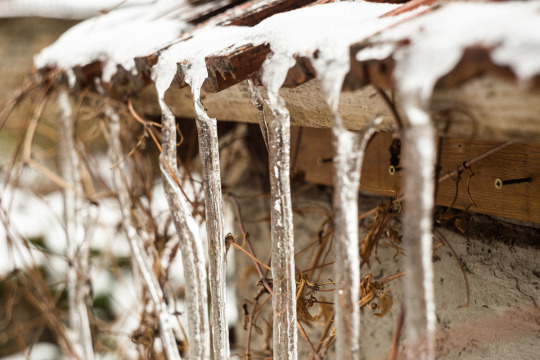
Zimsko sejanje ”na otvorenom”
Vreme je da obnovim gradivo pošto se bliži momenat za zimsko sejanje. Prošle godine sam bila zadovoljna rezultatima, a pogotovo me oduševio paradajz.
Dovoljno je pogledati kako je priroda uredila stvari. Biljke se i bez naše pomoći rasejavaju i niču same na proleće čim se stvore adekvatni uslovi.
Pri odabiru biljaka za sejanje ovom metodom obratite pažnju na informacije koje pročitate . Ako piše da je semenu potrebna:
stratifikacija
skarifikacija
hladan period za nicanje
ako se samorasejava
seje na jesen
seje u rano proleće na otvoreno
ako se biljke klasifikuju kao otporne vrste tj. hardy annuals ili hardy perennials
sve su to kandidati za ovu metodu. Da vam uštedim vreme, spisak biljaka možete naći na kraju bloga.
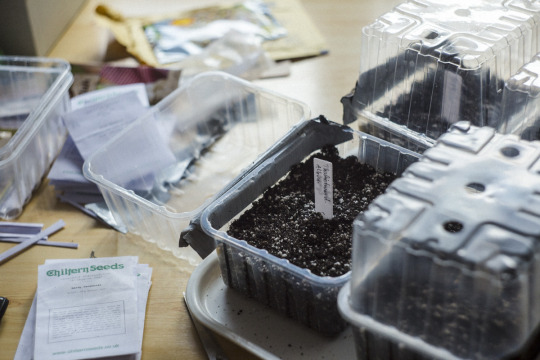
Zimsko sejanje je specifično po recikliranju starih plastičnih flaša i posuda čija je uloga da posluže kao mini plastenik i zaštite malu biljku. Idealna posuda je višlja, na primer boca od 5l za vodu, ali poslužiće i manje posude. Važno je da su providne kako bi biljke mogle da vrše fotosintezu i da imaju rupice na dnu za drenažu, kao i par većih rupa na vrhu da bi upadala kiša i dolazio svež vazduh, jer bez ventilacije su biljke i seme u opasnosti da se skuvaju po sunčanom danu.
Ostali materjali koje je potrebno da imate su armirana lepljiva traka - duct tape, permanentni marker i zemlja.
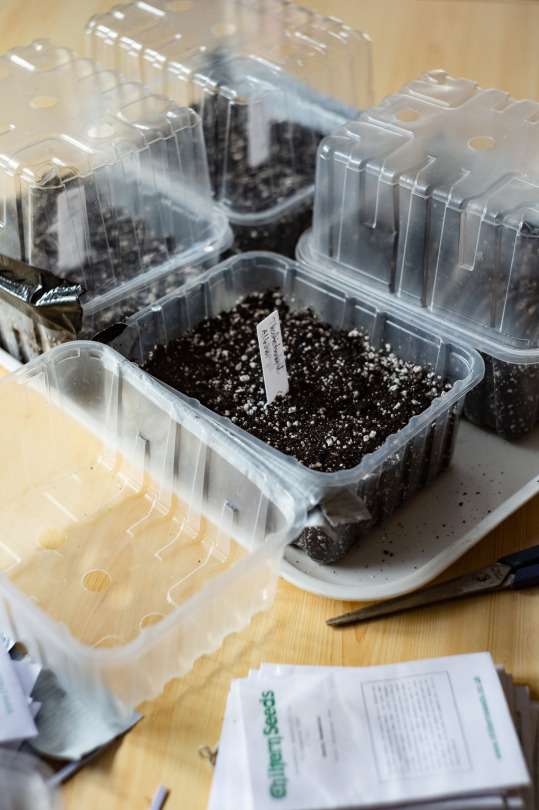
Ako koristite flaše rasecite ih skoro skroz negde na malo manje od pola (manja polovina je donja), ne zaboravite rupice za drenažu izbušiti nožem ili bušilicom. Ispunite donji deo zemljom, zalijte i ostavite da se višak vode iscedi. Preporučujem da zalivate od dole, stavite u dublju posudu sa vodom i neka zemlja popije tačno onoliko koliko joj treba. Razbacajte semenke po površini, utisnite ih da bi bili sigurni da su u kontaktu sa zemljom. Ukoliko su krupnije semenke dodajte još zemlje na njih, otprilike 2x kolike su same semenke, a za sitne tek tek posolite zemljom. Obratite pažnju da li je semenu potrebna svetlost za nicanje jer u tom slučaju nije potrebno da dodajete zemlju na seme. U ovom trenutku zabodite i neki obeleživač u posudu, ili napišite ime biljke na samu posudu, zaklopite gornji deo i dobro zalepite armiranom trakom oko cele flaše ili posude koju ste već izabrali. Skinite čep sa flaše!
Ovo je bio školski opis, nisam želela bilo šta da izostavim. Vi imate slobodu da ovu metodu prilagodite onome što imate na raspolaganju. Inspiracije ima na pretek samo googlajte wintersowing. Ja sam probala i flaše, i po dve spojene kutije za salatu, kao i veću plastičnu kutiju za odlaganje od 52l.
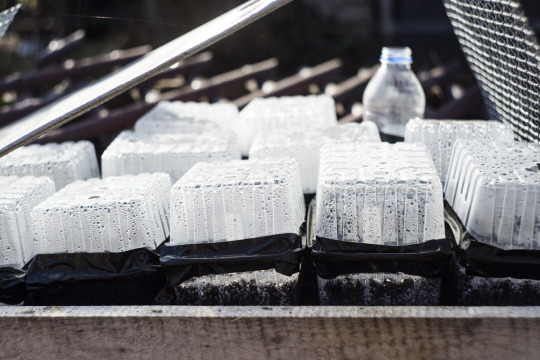

U veću kutiju sam stavila male saksijice sa paradajzom, poklopac kutije sam izbušila, dno nisam, jer sam odlučila da ih zalivam tako što ću sipati vodu u kutiju pa višak koji zemlja ne popije isuti. To je značilo da svaki put vadim sve saksijice napolje što nije idealno.


Na dan kada sam sejala paradajz je bilo veoma toplo, 25 stepeni na suncu!
Zalivanje će biti tema ako vidite da nema padavina, nemojte dozvoliti da se zemlja isuši. Kroz veće otvore na vrhu posuda sipajte vodu, ali ne kao iz česme. Izbušite iglom čep jedne flaše, kao da pravite mali tuš i tako sipajte vodu. Voda će se stvarati i od kondezacije u mini plastenicima, jer je u njima ipak toplije, pogotovo kada biljke malo porastu. Ako je potrebno menjajte mesto, nemojte ih držati na direktom suncu. Ukoliko je jako toplo otvorite/odlepite posude u toku dana da se biljke ne bi skuvale. Ako se desi da nailazi hladniji talas, mraz, dok su biljke male vredi prebaciti preko posuda neki karton ili ćebe za noć. Osigurajte svoje posude od vetra i ljubimaca da ih ne prevrnu.
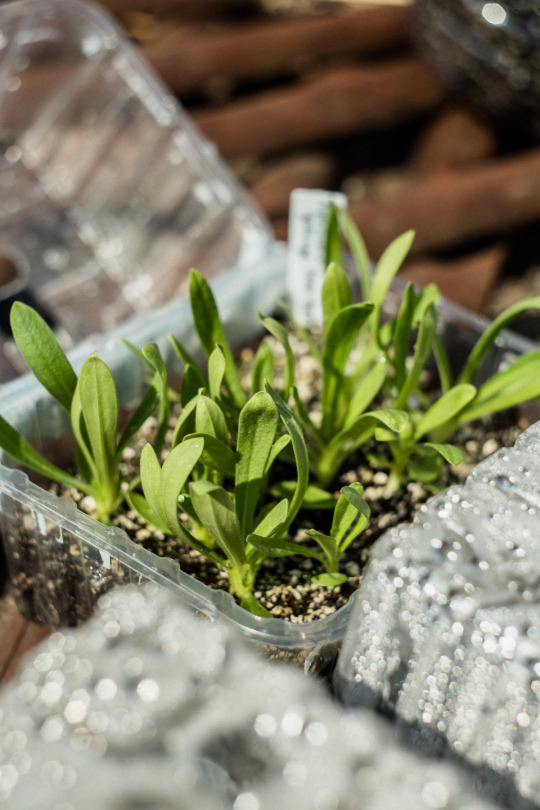
Beli kukolj, Agrostemma githago skoro spremna za presađivanje u baštu.
Vreme za zimsko sejanje može da počne već u februaru, i ne morate sve odjednom. Ja sam sejala u prvoj trećini februara i drugoj trećini marta. Čak i ako padne sneg i zatrpa posude vi ništa ne morate da dirate.
Paradajz sam posejala u isto vreme kao i prethodnih godina dok sam ga držala unutra. U svom mini plasteniku je bio do prve trećine maja kada sam ga presadila u baštu. Važno je da napomenem da biljke koje su uzgojene ovom metodom nije potrebno navikavati na spoljne uslove te su odmah spremne da se presele na stalno mesto kada za to dođe vreme. Krajem aprila sam skinula poklopac sa paradajza, čak ga nisam ni vraćala noću ako nije bilo potrebe. Presadnice paradajza su mi bile nikad bolje, malo niže ali debelih stabljika i listova, divne zelene boje.
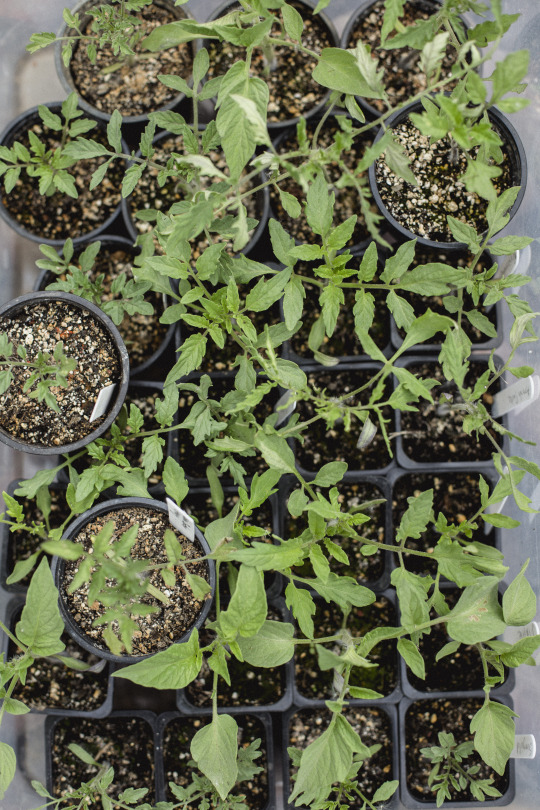
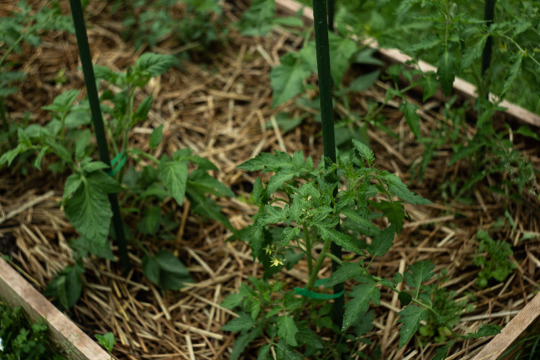
Isti paradajz 3. juna.
Najzad evo i liste cvetnica koje možete sejati na ovaj način, iste biljke možete sejati i na jesen (a to je druga tema! pokrih dve teme jednim udarcem). Ovo nikako nije kompletna lista, preporučujem da svakako sami istražite. Na ovoj listi fale malo osetljivije biljke, npr. ja sam i kosmos sejala ovako ali tek u martu.
Jednogodišnje:
Kela (Ammi visnaga)
Divlji komorač (Ammi majus)
Kukolj (Agrostemma githago)
Šlajer cveće (Gypsophila annua)
Različak (Centaurea cyanus)
Irski zvončići (Moluccella laevis)
Zvinčac (Bupleurum griffithi)
Boraž, boražina, boreč (Borago officinalis)
Neven (Calendula officinalis)
Kalifornijski mak (Escholzia californica)
Velika visika (Cerinthe major)
Nezaboravak (Cynoglossum amabile)
Bulka (Papaver rhoeas)
Noćna frajla (Hesperis matronalis) *dvogodišnja
Divlja šargarepa (Daucus carota)
Turski karanfil (Dianthus barbatus)
Mirođija (Anethum graveolens)
Digitalis (Digitalis purpurea) *dvogodišnja
Virak (Alchemilla mollis)
Žavornjak (Consolida ajacis)
Mačkov brk (Nigella damascena)
Stidak (Orlaya grandiflora)
Skabiosa (Scabiosa atropurpurea)
Zevalica (Antirrhinum majus)
Ukrasni grašak (Lathyrus odoratum)
Divizma (Verbascum)
Višegodišnje
Hajdučka trava (Achillea sp.)
Mirisna kopriva (Agastache foeniculum)
Monarda (Monarda fistulosa)
Gailardija (Gaillardia griffithi)
Gaura (Gaura lindheimeri)
Geum (Geum sp.)
Svilenica (Asclepias tuberosa)
Zvončići (Campanula sp.)
Kandilica (Aguilegia sp.)
Koreopsis (Coreopsis sp.)
Delfinijum, visoki žavornjak (Delphinium elatum)
Ehinacea (Echinacea purpurea)
Baštenski floks (Phlox paniculatum)
Zlatnica (Solidago sp.)
Plavi čičak, globus čičak (Echinops ritro)
Konopljuša (Eupatorium sp.)
Lavanda (Lavandula sp.)
Brazilska verbena (Verbena bonariensis)
Orijentalni mak (Papaver orientale)
Rudbekia (Rudbeckia sp.)
Taliktrum (Thalictrum sp.)
Žalfija (Salvia sp.)
Što se tiče povrća u februaru možete sejati već sledeće biljke:
Bosiljak
Brokoli
Keljčići
Kelj
Lukovi
Grašak
Spanać
Blitva
Cvekla
Salate
Od marta se seju malo osetljivije:
Kukuruz
Krastavci
Patlidžan
Paprike
Bundeve
Tikvice
Paradajz
Tu ću se zaustaviti, nadam se da sam barem nekog zainteresovala da pokuša, sretno vam zimsko sejanje! Grupa za podršku na FB
0 notes
Photo
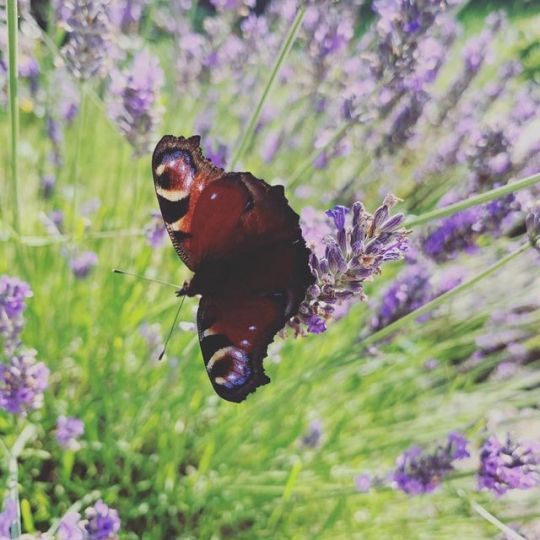
Peacock Butterfly (Aglais io) and Bumblebee (Bombus sp.) on Lavender, (Lavandula angustifolia) at Craigyoun Country Park. @craigtouncountrypark Proper summer pleasures. #beneficialinsects #butterfly #butterflies #bees #bumblebee #lavender #plants #pollinator #pollinatorgarden #summer #garden #standrews #craigtoun #countrypark #landscape (at Craigtoun Park) https://www.instagram.com/p/B1qzpZggHGp/?igshid=f6bfsggat96x
#beneficialinsects#butterfly#butterflies#bees#bumblebee#lavender#plants#pollinator#pollinatorgarden#summer#garden#standrews#craigtoun#countrypark#landscape
0 notes
Text
How to Style Garden Walkway That Brings a Landscape to Life


https://goo.gl/maps/8mcm37sG3P8rQVQS6
Courses, whether extending from the street to door or winding through gardens, have actually constantly interested me. Possibly it's due to the fact that their lines lead the eye and there are many fantastic styles and product alternatives for them, yet they frequently are so unimaginatively created. Courses can and ought to narrate, generate feeling, promote expedition and make a significant connection with land and architecture. How do your procedure up?
If you see your garden as a living being, as I do my own, start to consider your paths as its circulatory system. It might be time for a transfusion, one that will revive your landscape and bring cohesion to it.
Examine What You Have
While I's real that the function of courses is to securely move from Point A to Point B, who states the journey needs to be dull, foreseeable or ordinary? The keyword here is a journey. Consider a journey you've taken abroad or to the opposite coast, or consider a fictitious journey, maybe the Banks kids appearing and out of pathway chalk illustrations in Mary Poppins. There's a story connected to every journey. What story does your garden need to inform? Maybe it's about your household, your character or your heritage. Now ask yourself how your course or walkway suits that story.
The walkway revealed here rapidly starts to narrate. The square lines of each area recommend order, the bigger stones form a natural relationship with the land, and the mosaics mention artistry and somewhat suppressed whimsy. It's a fascinating marital relationship, one that fires up the creativity. The lesson is this: Your story can start to unfold with your option of courses.

Think about Shape
Forming is the adjustment of a line, and particular lines, I think, speak widely to our minds and feelings. This is why it's crucial to think about the shape of your course. Let's take a look at some various shapes.
Serpentine. A serpentine line develops a sensation of serenity due to the fact that it's natural and natural. It pulls your eye forward to produce interest about what's simply around the bend, which is deliberately out of sight. Consider this shape if you take pleasure in developing garden vignettes or have a number of pieces of garden art that aren't suggested to be seen simultaneously.
Straight. A straight line checks out as a lot more practical, directing visitors rapidly, effectively and securely from one location to another. Straight courses can be ordinary, so what makes the one revealed here various? Initially, the edges are softened by the lavender (Lavandula sp., zones 5 to 9; discover your zone), as it has actually been permitted to overflow. Second, the disintegrated granite substrate forms a natural and natural relationship with the land. Third, the course is large enough for numerous individuals to stroll side by side, enabling the possibility of discussion.
Zigzag. The zigzag pattern is traditionally seen in the yatsuhashi or, "8 bridges," courses of Japan. The cultural theory was that fiends might not browse 90-degree angles, so courses set out in this way offered security. This shape provides a Zen, meditative sensation to a course. Furthermore, it slows the visitor down, permitting him or her to take pleasure in the garden. Zigzag courses are likewise rather suitable in modern areas, and the lines can be streamlined to make the proper options for more conventional areas also.
Think about Width
Generally, most domestic courses, especially pathways, are 4 feet broad, permitting 2 average-size grownups to stroll side by side through an area. Nevertheless, this is a guide, not a guideline. Begin by asking yourself what you desire the course to do for you, functionally and philosophically.
A course that's larger than average, possibly 5 to 8 feet, enables groups of individuals to stroll together and reverse. It can likewise be utilized as extra amusing area. Side garden courses, as revealed here, can be much narrower, possibly just 2 to 3 feet large. The narrower width triggers visitors to stroll file through the area and slows them down enough time to discover centerpieces or garden vignettes. The narrower course is likewise philosophical: We all experience life separately and our journey is, in truth, our own.
How to Lay the Foundation for a Patio or Walkway
youtube
More about walkways and patios, go to:
Big Easy Landscaping - New Orleans Office
https://www.bigeasylandscaping.com/
3436 Magazine St #120-A, New Orleans, LA 70115
504-226-7270
0 notes
Text
Trees for Years 2019 - English
(Lee en español)

Colchester has had, for 13 years, an initiative that allows residents, community and volunteer groups, and schools to collect trees and bushes (for free!) to be planted in private land. This initiative is interesting as it usually promotes the planting of native trees as ornamental garden plants and supports green zones and favorable habitats for song birds (passerine). This is important because passerines have suffer greave declines in recent years as shown by studies conducted over the last 20 years (Shocking’ decline in birds across Europe... - The Independent) (Even familiar birds at risk... - BirdLife).
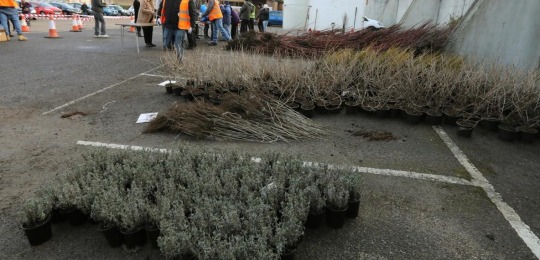
At the event, each household could have three trees or bushes, and more than 2000 where handled among field maples (Acer campestre), silver birch (Betula pendula), lavender (Lavandula sp.), bird cherry (Prunus padus), blackcurrant (Ribes nigrum), gooseberries (Ribes uva-crispa), raspberries (Rubus idaeus)...
I got mine in my garden, now all is needed is to wait until spring for some leaves...
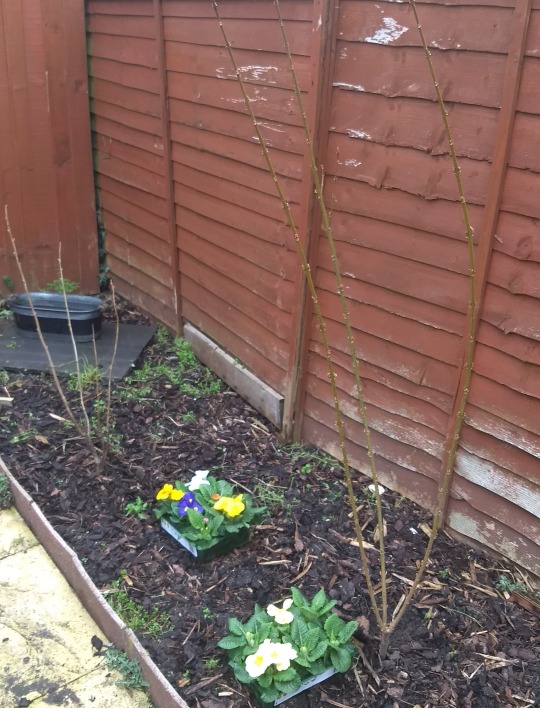
0 notes
Photo
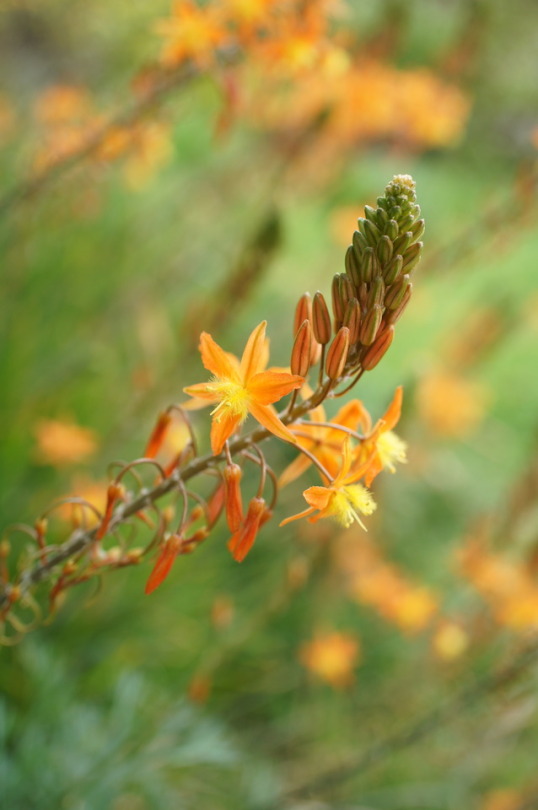
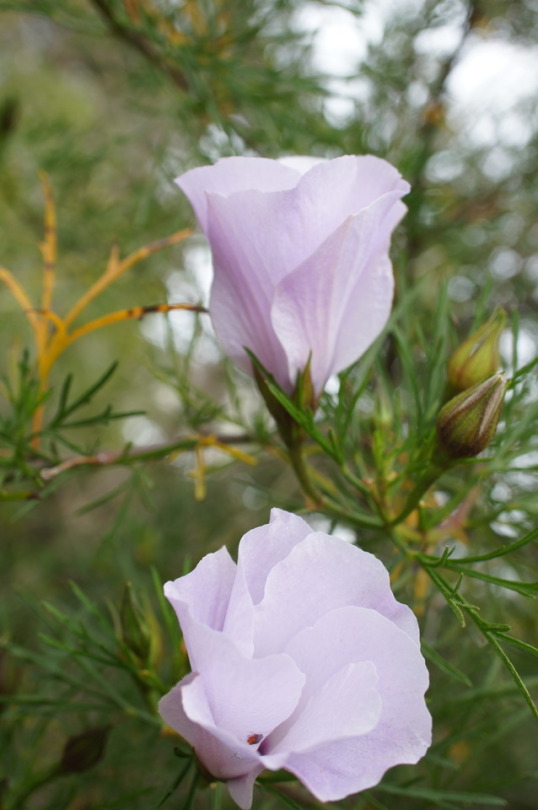
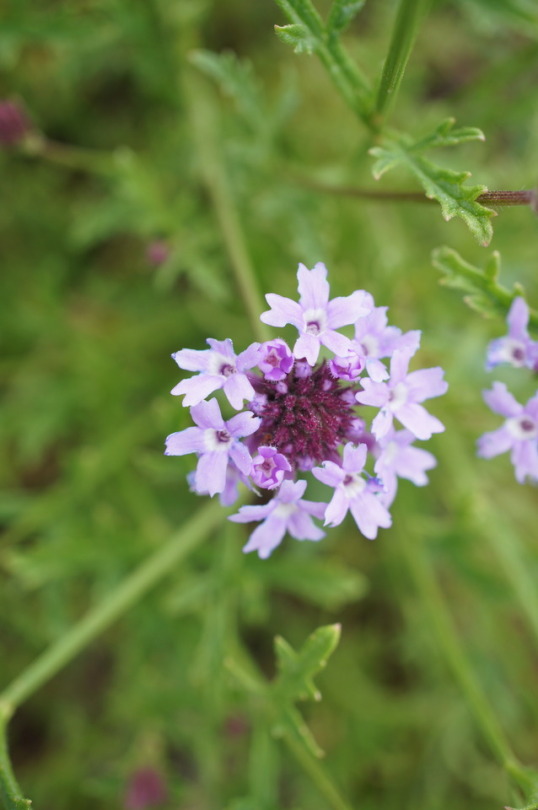


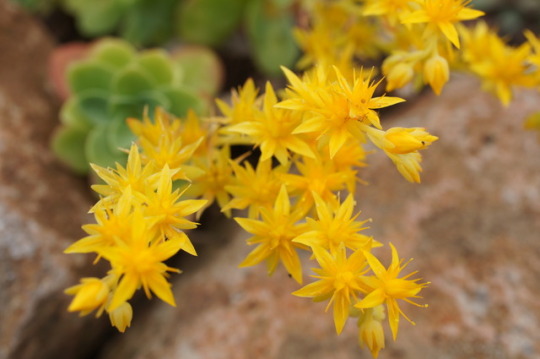


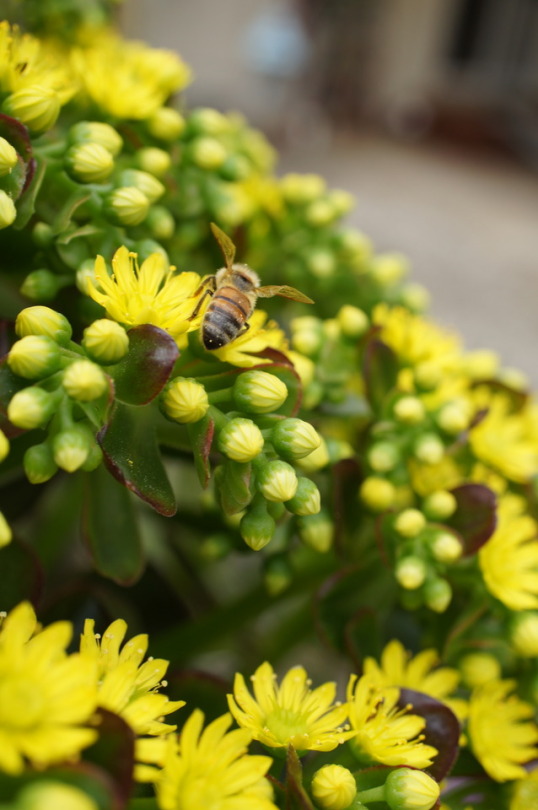
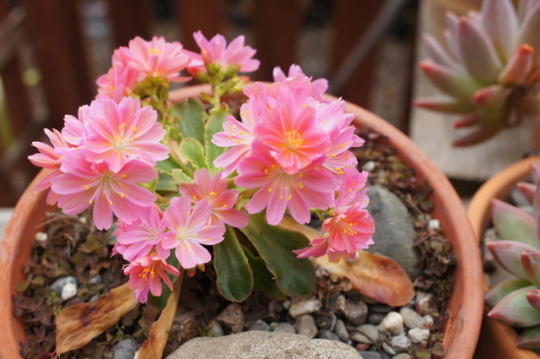
Yesterday’s Flowers - 3/19/17
186 notes
·
View notes
Text
Trepadeira jade: dicas e ideias para cultivar essa planta no seu jardim
Foto: Reprodução /Gilberto Elkis
Um jardim colorido e repleto de uma variedade de plantas é maravilhoso. A beleza das flores é espetacular e elas podem estar presentes de várias formas no exterior da sua casa: plantadas em vasos, formando maciços, penduradas na varanda ou cobrindo pérgolas com variadas espécies de flores para jardim. Mas para ter um jardim sempre belo, a seleção de plantas deve sempre levar alguns fatores em consideração, como a época de floração, a manutenção, a necessidade de Sol e a adaptabilidade climática da espécie.
Existe uma infinidade de espécies de flores, algumas marcantes pelo seu perfume, outras pelo seu formato ou cores. Algumas ainda são grandes atrativos para insetos, borboletas e beija-flores. Para ajudar você nessa empreitada, reunimos as 100 espécies mais comuns e facilmente encontradas para você conhecer um pouquinho mais de flores para jardim e se deslumbrar com a beleza única de variadas espécies. Confira:
1. Abelha Azul ou Delfínio (Delphinium elatum)
Foto: Reprodução /Matheus Penteado
2. Agapanto (Agapanthus africanus)
Foto: Reprodução /Gilberto Elkis
3. Agerato (Ageratum houstonianum)
Foto: Reprodução /Minhas Plantas
4. Alamanda (Allamanda cathartica)
Foto: Reprodução / Paisagismo Ouro Verde
5. Alfazema (Lavandula angustifolia)
Foto: Reprodução / Juliana Freitas Paisagismo
6. Álisso (Lobularia maritima)
Foto: Reprodução /Murilo Antonio Soares
7. Alpínia (Alpinia purpurata)
Foto: Reprodução / CP Paisagismo
8. Amor Perfeito (Viola tricolor)
Foto: Reprodução / Cambridge Garden Services
9. Asessippi lilás (Syringa vulgaris)
Foto: Reprodução / Loja Plantei
10. Astilbe (Astilbe)
Leia também:
O uso de trepadeiras para decorações espetaculares 140305
Foto: Reprodução / iStock
11. Astromélia (Alstroemeria)
Foto: Reprodução / Adriano Gronard Paisagismo
12. Ave do Paraíso (Strelitzia reginae)
Foto: Reprodução / Escritório Burle Marx
13. Azaleia (Rhododendron simsii)
Foto: Reprodução /Arte e Jardim
14. Azulzinha (Evolvulus glomeratus)
Foto: Reprodução / Espaço Pau Brasil
15. Babosa (Aloe vera)
Foto: Reprodução /Minhas Plantas
16. Barba-de-serpente (Liriope muscari)
Foto: Reprodução / Catê Poli Paisagismo
17. Begônia (Begonia cinnabarina)
Foto: Reprodução /Minhas Plantas
18. Bela-emília (Plumbago auriculata)
Foto: Reprodução /Catê Poli Paisagismo
19. Boca de Leão (Antirrhinum majus)
Foto: Reprodução /Encantos do Jardim
20. Brinco-de-princesa (Fuchsia hybrida)
Leia também:
Flores para jardim: 100 espécies mais comuns para embelezar sua casa 140305
Foto: Reprodução /Rosalba Paisagismo
21. Calêndula (Calendula)
Foto: Reprodução / The garden helper
22. Camarão (Justicia brandegeeana)
Foto: Reprodução / Minhas Plantas
23. Camarão amarelo (Pachystachys lutea)
Foto: Reprodução /Carvalho Plantas
24. Camélia (Camellia japonica)
Foto: Reprodução /Mauricio Prada Paisagismo
25. Cana-de-macaco (Costus spicatus)
Foto: Reprodução /Luis Felipe da Conceição
26. Candytuft (Iberis gibraltarica)
Foto: Reprodução / iStock
27. Cardo Marítimo (Eryngium maritimum)
Foto: Reprodução /Piedade Araújo Sol
28. Ciclame (Cyclamen persicum)
Foto: Reprodução / Murilo Antonio Soares
29. Cinerária (Senecio cruentus)
Foto: Reprodução / iStock
30. Clerodendro (Clerodendron splendens)
Leia também:
Decoração de jardim: 50 ideias e tutoriais para dar vida à área externa 140305
Foto: Reprodução / Minhas Plantas
31. Clethra Alnifolia (Clethra Alnifolia)
Foto: Reprodução / iStock
32. Clúsia (Clusia fluminensis)
Foto: Reprodução / Minhas Plantas
33. Coleus (Solenostemon scutellaroides)
Foto: Reprodução /Plantas de Casa
34. Congeia (Congea tomentosa)
Foto: Reprodução / Daniel Nunes Paisagismo
35. Coração sangrento (Clerodendrum splendens)
Foto: Reprodução /Catê Poli Paisagismo
36. Coreópsis (Coreopsis lanceolata)
Foto: Reprodução /Plantas de Casa
37. Couve Ornamental (Brassica oleracea)
Foto: Reprodução /Jardim de Ervas
38. Cravina (Dianthus chinensis)
Foto: Reprodução /Murilo Antonio Soares
39. Cravo (Tagetes erecta)
Foto: Reprodução /Chico Faria Flores
40. Dália (Dahlia)
Leia também:
Pergolado de madeira: tutoriais e 100 ideias para a área externa 140305
Foto: Reprodução /Estilo Orgânico
41. Deladeira (Digitalis purpurea)
Foto: Reprodução /Matheus Penteado
42. Falsa-érica (Cuphea gracilis)
Foto: Reprodução /Murilo Antonio Soares
43. Falso- Íris (Neomarica caerulea)
Foto: Reprodução /Daniel Nunes Paisagismo
44. Flor Áster (Symphyotrichum Tradescantii)
Foto: Reprodução /Murilo Antonio Soares
45. Flor de Chagas (Tropaeolum majus)
Foto: Reprodução / Plantas de Casa
46. Flor de Cone (Echinacea purpurea)
Foto: Reprodução /Matheus Penteado
47. Flor Oriental Érica (Leptospermum scoparium)
Foto: Reprodução /Tropical Garden
48. Flox (Phlox drummondii)
Foto: Reprodução / iStock
49. Gailárdia (Gaillardia x grandiflora)
Foto: Reprodução /Murilo Antonio Soares
50. Gardênia (Gardenia jasminoides)
Foto: Reprodução / Espaço Pau Brasil
51. Gengibre-azul (Dichorisandra thyrsiflora)
Foto: Reprodução / Roberto Riscala
52. Gerânio (Pelargonium)
Foto: Reprodução /Paula Galbi
53. Geum Chiloense (Geum quellyon)
Foto: Reprodução / iStock
54. Glicínia (Wisteria sp.)
Foto: Reprodução / Roberto Riscala
55. Heléboro (Helleborus orientalis)
Foto: Reprodução /Rosalba Paisagismo
56. Helicônia (Heliconia rostrata)
Foto: Reprodução / Roberto Riscala
57. Hemerocale (Hemerocallis fulva L.)
Foto: Reprodução /Rosalba Paisagismo
58. Hibisco (Hibiscus rosa-sinensis)
Foto: Reprodução /The Flower Expert
59. Hortênsia (Hydrangea macrophylla)
Foto: Reprodução /Juliana Freitas Paisagismo
60. Ipoméia (Ipomoea cairica)
Foto: Reprodução / Natureza Linda de Se Ver
61. Ixora (Ixora coccinea)
Foto: Reprodução /Rosalba Paisagismo
62. Jasmim do Imperador (Osmanthus fragrans)
Foto: Reprodução / Espaço Pau Brasil
63. Jasmim-dos-açores (Jasminum azoricum)
Foto: Reprodução /Gigi Botelho
64. Jasmim-dos-poetas (Jasminum polyanthum)
Foto: Reprodução / Catê Poli Paisagismo
65. Jasmim-estrela (Trachelospermum jasminoides)
Foto: Reprodução /Espaço Pau Brasil
66. Jasmim Manga (Plumeria rubra)
Foto: Reprodução /Daniel Nunes Paisagismo
67. Lantana (Lantana)
Foto: Reprodução /Jardineiro.net
68. Lanterninha chinesa (Abutilon striatum)
Foto: Reprodução / Natureza Linda de Se Ver
69. Lavanda (Lavandula dentata)
Foto: Reprodução /Claudia Munhoz
70. Lindheimeri (Gaura lindheimeri)
Foto: Reprodução /Loja Plantei
71. Lírio (Lilium hybrid)
Foto: Reprodução / Juliana Freitas Paisagismo
72. Lírios de Dia (Hemerocallis x hybrida)
Foto: Reprodução /Minhas Plantas
73. Madressilva (Lonicera japonica)
Foto: Reprodução /Minhas Plantas
74. Malcolmia Maritima (Malcolmia maritima)
Foto: Reprodução /Viona shulamit
75. Manacá-da-Serra (Tibouchina mutabilis)
Foto: Reprodução / Catê Poli Paisagismo
76. Margarida (Leucanthemum vulgare)
Foto: Reprodução /Murilo Antonio Soares
77. Maria-sem-vergonha (Impatiens walleriana)
Foto: Reprodução /Minhas Plantas
78. Mini rosa (Rosa chinensis)
Foto: Reprodução / Catê Poli Paisagismo
79. Miosótis (Myosotis)
Foto: Reprodução / iStock
80. Narciso (Narcissus)
Foto: Reprodução /Rosalba Paisagismo
81. Nemésia (Nemesia strumosa)
Foto: Reprodução / iStock
82. Nêveda (Nepeta cataria)
Foto: Reprodução /Minhas Plantas
83. Onze-horas (Portulaca grandiflora)
Foto: Reprodução / Paisagismo Ouro Verde
84. Papoila Islandesa (Papaver Nudicaule)
Foto: Reprodução /Murilo Antonio Soares
85. Pentstemon (Penstemon x gloxinioides)
Foto: Reprodução / iStock
86. Peónia (Paeonia)
Foto: Reprodução / iStock
87. Primavera (Bougainvillea)
Foto: Reprodução / Gilberto Elkis
88. Prímula (Primula)
Foto: Reprodução /Murilo Antonio Soares
89. Rabo-de-gato (Acalypha reptans)
Foto: Reprodução /Escritório Burle Marx
90. Rosa (Rosa sp.)
Foto: Reprodução /Minhas Plantas
91. Sálvia Ananás (Salvia elegans)
Foto: Reprodução /Terra D’Avó
92. Sálvia de Jerusalém (Salvia hierosolymitana)
Foto: Reprodução / iStock
93. Sálvia Leucantha (Salvia leucantha)
Foto: Reprodução / iStock
94. Santolina (Santolina chamaecyparissus)
Foto: Reprodução / iStock
95. Sapatinho-de-judia (Thunbergia mysorensis)
Foto: Reprodução / Juliana Freitas Paisagismo
96. Sedum Telephium (Hylotelephium telephium)
Foto: Reprodução / iStock
97. Sete-léguas (Podranea ricasoliana)
Foto: Reprodução /Plantas de Casa
98. Torênia (Torenia fournieri)
Foto: Reprodução /Minhas Plantas
99. Viburno (Viburnum tinus)
Foto: Reprodução / Espaço Pau Brasil
100. Vinca (Catharanthus roseus)
Foto: Reprodução /Minhas Plantas
A beleza das flores é encantadora e, com esse guia, fica muito fácil acrescentar mais cores no seu jardim. Agora é só escolher as espécies preferidas e deixar o seu espaço exterior colorido, repleto de encanto e com muito frescor!
O post Trepadeira jade: dicas e ideias para cultivar essa planta no seu jardim apareceu primeiro em Tua Casa.
Trepadeira jade: dicas e ideias para cultivar essa planta no seu jardimpublicado primeiro em https://www.tuacasa.com.br
0 notes
Text
Trepadeira jade: dicas e ideias para cultivar essa planta no seu jardim
Foto: Reprodução /Gilberto Elkis
Um jardim colorido e repleto de uma variedade de plantas é maravilhoso. A beleza das flores é espetacular e elas podem estar presentes de várias formas no exterior da sua casa: plantadas em vasos, formando maciços, penduradas na varanda ou cobrindo pérgolas com variadas espécies de flores para jardim. Mas para ter um jardim sempre belo, a seleção de plantas deve sempre levar alguns fatores em consideração, como a época de floração, a manutenção, a necessidade de Sol e a adaptabilidade climática da espécie.
Existe uma infinidade de espécies de flores, algumas marcantes pelo seu perfume, outras pelo seu formato ou cores. Algumas ainda são grandes atrativos para insetos, borboletas e beija-flores. Para ajudar você nessa empreitada, reunimos as 100 espécies mais comuns e facilmente encontradas para você conhecer um pouquinho mais de flores para jardim e se deslumbrar com a beleza única de variadas espécies. Confira:
1. Abelha Azul ou Delfínio (Delphinium elatum)
Foto: Reprodução /Matheus Penteado
2. Agapanto (Agapanthus africanus)
Foto: Reprodução /Gilberto Elkis
3. Agerato (Ageratum houstonianum)
Foto: Reprodução /Minhas Plantas
4. Alamanda (Allamanda cathartica)
Foto: Reprodução / Paisagismo Ouro Verde
5. Alfazema (Lavandula angustifolia)
Foto: Reprodução / Juliana Freitas Paisagismo
6. Álisso (Lobularia maritima)
Foto: Reprodução /Murilo Antonio Soares
7. Alpínia (Alpinia purpurata)
Foto: Reprodução / CP Paisagismo
8. Amor Perfeito (Viola tricolor)
Foto: Reprodução / Cambridge Garden Services
9. Asessippi lilás (Syringa vulgaris)
Foto: Reprodução / Loja Plantei
10. Astilbe (Astilbe)
Leia também: O uso de trepadeiras para decorações espetaculares 140305
Foto: Reprodução / iStock
11. Astromélia (Alstroemeria)
Foto: Reprodução / Adriano Gronard Paisagismo
12. Ave do Paraíso (Strelitzia reginae)
Foto: Reprodução / Escritório Burle Marx
13. Azaleia (Rhododendron simsii)
Foto: Reprodução /Arte e Jardim
14. Azulzinha (Evolvulus glomeratus)
Foto: Reprodução / Espaço Pau Brasil
15. Babosa (Aloe vera)
Foto: Reprodução /Minhas Plantas
16. Barba-de-serpente (Liriope muscari)
Foto: Reprodução / Catê Poli Paisagismo
17. Begônia (Begonia cinnabarina)
Foto: Reprodução /Minhas Plantas
18. Bela-emília (Plumbago auriculata)
Foto: Reprodução /Catê Poli Paisagismo
19. Boca de Leão (Antirrhinum majus)
Foto: Reprodução /Encantos do Jardim
20. Brinco-de-princesa (Fuchsia hybrida)
Leia também: Flores para jardim: 100 espécies mais comuns para embelezar sua casa 140305
Foto: Reprodução /Rosalba Paisagismo
21. Calêndula (Calendula)
Foto: Reprodução / The garden helper
22. Camarão (Justicia brandegeeana)
Foto: Reprodução / Minhas Plantas
23. Camarão amarelo (Pachystachys lutea)
Foto: Reprodução /Carvalho Plantas
24. Camélia (Camellia japonica)
Foto: Reprodução /Mauricio Prada Paisagismo
25. Cana-de-macaco (Costus spicatus)
Foto: Reprodução /Luis Felipe da Conceição
26. Candytuft (Iberis gibraltarica)
Foto: Reprodução / iStock
27. Cardo Marítimo (Eryngium maritimum)
Foto: Reprodução /Piedade Araújo Sol
28. Ciclame (Cyclamen persicum)
Foto: Reprodução / Murilo Antonio Soares
29. Cinerária (Senecio cruentus)
Foto: Reprodução / iStock
30. Clerodendro (Clerodendron splendens)
Leia também: Decoração de jardim: 50 ideias e tutoriais para dar vida à área externa 140305
Foto: Reprodução / Minhas Plantas
31. Clethra Alnifolia (Clethra Alnifolia)
Foto: Reprodução / iStock
32. Clúsia (Clusia fluminensis)
Foto: Reprodução / Minhas Plantas
33. Coleus (Solenostemon scutellaroides)
Foto: Reprodução /Plantas de Casa
34. Congeia (Congea tomentosa)
Foto: Reprodução / Daniel Nunes Paisagismo
35. Coração sangrento (Clerodendrum splendens)
Foto: Reprodução /Catê Poli Paisagismo
36. Coreópsis (Coreopsis lanceolata)
Foto: Reprodução /Plantas de Casa
37. Couve Ornamental (Brassica oleracea)
Foto: Reprodução /Jardim de Ervas
38. Cravina (Dianthus chinensis)
Foto: Reprodução /Murilo Antonio Soares
39. Cravo (Tagetes erecta)
Foto: Reprodução /Chico Faria Flores
40. Dália (Dahlia)
Leia também: Pergolado de madeira: tutoriais e 100 ideias para a área externa 140305
Foto: Reprodução /Estilo Orgânico
41. Deladeira (Digitalis purpurea)
Foto: Reprodução /Matheus Penteado
42. Falsa-érica (Cuphea gracilis)
Foto: Reprodução /Murilo Antonio Soares
43. Falso- Íris (Neomarica caerulea)
Foto: Reprodução /Daniel Nunes Paisagismo
44. Flor Áster (Symphyotrichum Tradescantii)
Foto: Reprodução /Murilo Antonio Soares
45. Flor de Chagas (Tropaeolum majus)
Foto: Reprodução / Plantas de Casa
46. Flor de Cone (Echinacea purpurea)
Foto: Reprodução /Matheus Penteado
47. Flor Oriental Érica (Leptospermum scoparium)
Foto: Reprodução /Tropical Garden
48. Flox (Phlox drummondii)
Foto: Reprodução / iStock
49. Gailárdia (Gaillardia x grandiflora)
Foto: Reprodução /Murilo Antonio Soares
50. Gardênia (Gardenia jasminoides)
Foto: Reprodução / Espaço Pau Brasil
51. Gengibre-azul (Dichorisandra thyrsiflora)
Foto: Reprodução / Roberto Riscala
52. Gerânio (Pelargonium)
Foto: Reprodução /Paula Galbi
53. Geum Chiloense (Geum quellyon)
Foto: Reprodução / iStock
54. Glicínia (Wisteria sp.)
Foto: Reprodução / Roberto Riscala
55. Heléboro (Helleborus orientalis)
Foto: Reprodução /Rosalba Paisagismo
56. Helicônia (Heliconia rostrata)
Foto: Reprodução / Roberto Riscala
57. Hemerocale (Hemerocallis fulva L.)
Foto: Reprodução /Rosalba Paisagismo
58. Hibisco (Hibiscus rosa-sinensis)
Foto: Reprodução /The Flower Expert
59. Hortênsia (Hydrangea macrophylla)
Foto: Reprodução /Juliana Freitas Paisagismo
60. Ipoméia (Ipomoea cairica)
Foto: Reprodução / Natureza Linda de Se Ver
61. Ixora (Ixora coccinea)
Foto: Reprodução /Rosalba Paisagismo
62. Jasmim do Imperador (Osmanthus fragrans)
Foto: Reprodução / Espaço Pau Brasil
63. Jasmim-dos-açores (Jasminum azoricum)
Foto: Reprodução /Gigi Botelho
64. Jasmim-dos-poetas (Jasminum polyanthum)
Foto: Reprodução / Catê Poli Paisagismo
65. Jasmim-estrela (Trachelospermum jasminoides)
Foto: Reprodução /Espaço Pau Brasil
66. Jasmim Manga (Plumeria rubra)
Foto: Reprodução /Daniel Nunes Paisagismo
67. Lantana (Lantana)
Foto: Reprodução /Jardineiro.net
68. Lanterninha chinesa (Abutilon striatum)
Foto: Reprodução / Natureza Linda de Se Ver
69. Lavanda (Lavandula dentata)
Foto: Reprodução /Claudia Munhoz
70. Lindheimeri (Gaura lindheimeri)
Foto: Reprodução /Loja Plantei
71. Lírio (Lilium hybrid)
Foto: Reprodução / Juliana Freitas Paisagismo
72. Lírios de Dia (Hemerocallis x hybrida)
Foto: Reprodução /Minhas Plantas
73. Madressilva (Lonicera japonica)
Foto: Reprodução /Minhas Plantas
74. Malcolmia Maritima (Malcolmia maritima)
Foto: Reprodução /Viona shulamit
75. Manacá-da-Serra (Tibouchina mutabilis)
Foto: Reprodução / Catê Poli Paisagismo
76. Margarida (Leucanthemum vulgare)
Foto: Reprodução /Murilo Antonio Soares
77. Maria-sem-vergonha (Impatiens walleriana)
Foto: Reprodução /Minhas Plantas
78. Mini rosa (Rosa chinensis)
Foto: Reprodução / Catê Poli Paisagismo
79. Miosótis (Myosotis)
Foto: Reprodução / iStock
80. Narciso (Narcissus)
Foto: Reprodução /Rosalba Paisagismo
81. Nemésia (Nemesia strumosa)
Foto: Reprodução / iStock
82. Nêveda (Nepeta cataria)
Foto: Reprodução /Minhas Plantas
83. Onze-horas (Portulaca grandiflora)
Foto: Reprodução / Paisagismo Ouro Verde
84. Papoila Islandesa (Papaver Nudicaule)
Foto: Reprodução /Murilo Antonio Soares
85. Pentstemon (Penstemon x gloxinioides)
Foto: Reprodução / iStock
86. Peónia (Paeonia)
Foto: Reprodução / iStock
87. Primavera (Bougainvillea)
Foto: Reprodução / Gilberto Elkis
88. Prímula (Primula)
Foto: Reprodução /Murilo Antonio Soares
89. Rabo-de-gato (Acalypha reptans)
Foto: Reprodução /Escritório Burle Marx
90. Rosa (Rosa sp.)
Foto: Reprodução /Minhas Plantas
91. Sálvia Ananás (Salvia elegans)
Foto: Reprodução /Terra D’Avó
92. Sálvia de Jerusalém (Salvia hierosolymitana)
Foto: Reprodução / iStock
93. Sálvia Leucantha (Salvia leucantha)
Foto: Reprodução / iStock
94. Santolina (Santolina chamaecyparissus)
Foto: Reprodução / iStock
95. Sapatinho-de-judia (Thunbergia mysorensis)
Foto: Reprodução / Juliana Freitas Paisagismo
96. Sedum Telephium (Hylotelephium telephium)
Foto: Reprodução / iStock
97. Sete-léguas (Podranea ricasoliana)
Foto: Reprodução /Plantas de Casa
98. Torênia (Torenia fournieri)
Foto: Reprodução /Minhas Plantas
99. Viburno (Viburnum tinus)
Foto: Reprodução / Espaço Pau Brasil
100. Vinca (Catharanthus roseus)
Foto: Reprodução /Minhas Plantas
A beleza das flores é encantadora e, com esse guia, fica muito fácil acrescentar mais cores no seu jardim. Agora é só escolher as espécies preferidas e deixar o seu espaço exterior colorido, repleto de encanto e com muito frescor!
O post Trepadeira jade: dicas e ideias para cultivar essa planta no seu jardim apareceu primeiro em Tua Casa.
Trepadeira jade: dicas e ideias para cultivar essa planta no seu jardim publicado primeiro em https://www.tuacasa.com.br/
0 notes